
Has there ever been such a turbulent time for new cars?
Apart from the invention of the motor car in the late 19th century (and perhaps the oil crises in the ’70s) the landscape has never been as fast-moving or diverse as it is today.
Battery-electric vehicles are making a mark (the Tesla Model Y was Australia’s third best-selling SUV last year) but it’s the proliferation of Chinese automakers that’s changing everything.
BYD – or Build Your Dreams – may be new to Australia, however its EV sales surpassed Tesla to take number one globally in the fourth quarter of last year.
The 2024 Seal is its latest entrant, and it’ll do battle with Australia’s second favourite EV, the Tesla Model 3. Here, we’ve lined the pair up against our ride and handling benchmark in this class, the Hyundai Ioniq 6, to see which is best.

JUMP AHEAD
- What are they and how much do they cost?
- Interior comfort, space and storage: which is the best family car?
- Which has the best boot?
- How good is the technology?
- Range, charging and efficiency
- What are they like to drive?
- Warranty and servicing
- How safe are they?
- VERDICT
- SCORING
- Specifications
What are they and how much do they cost?
The Seal’s arrival kicked this test into gear because, on paper, it’s staggeringly enticing.
It’s a midsized four-door electric car with a five-star ANCAP safety rating, and a base price of $49,888 (before on-road costs) for the Dynamic RWD with 460km WLTP driving range.
Spec on test
For this test, BYD supplied the flagship Performance trim ($68,798). That's the one with a WLTP driving range of 520km, all-wheel drive, 390kW & 670Nm, and a 3.8-second 0-100km/h sprint.
And you’re right, those stats would have it see off a $205K Porsche Taycan 4S in a game of top trumps (well, except for price tag).
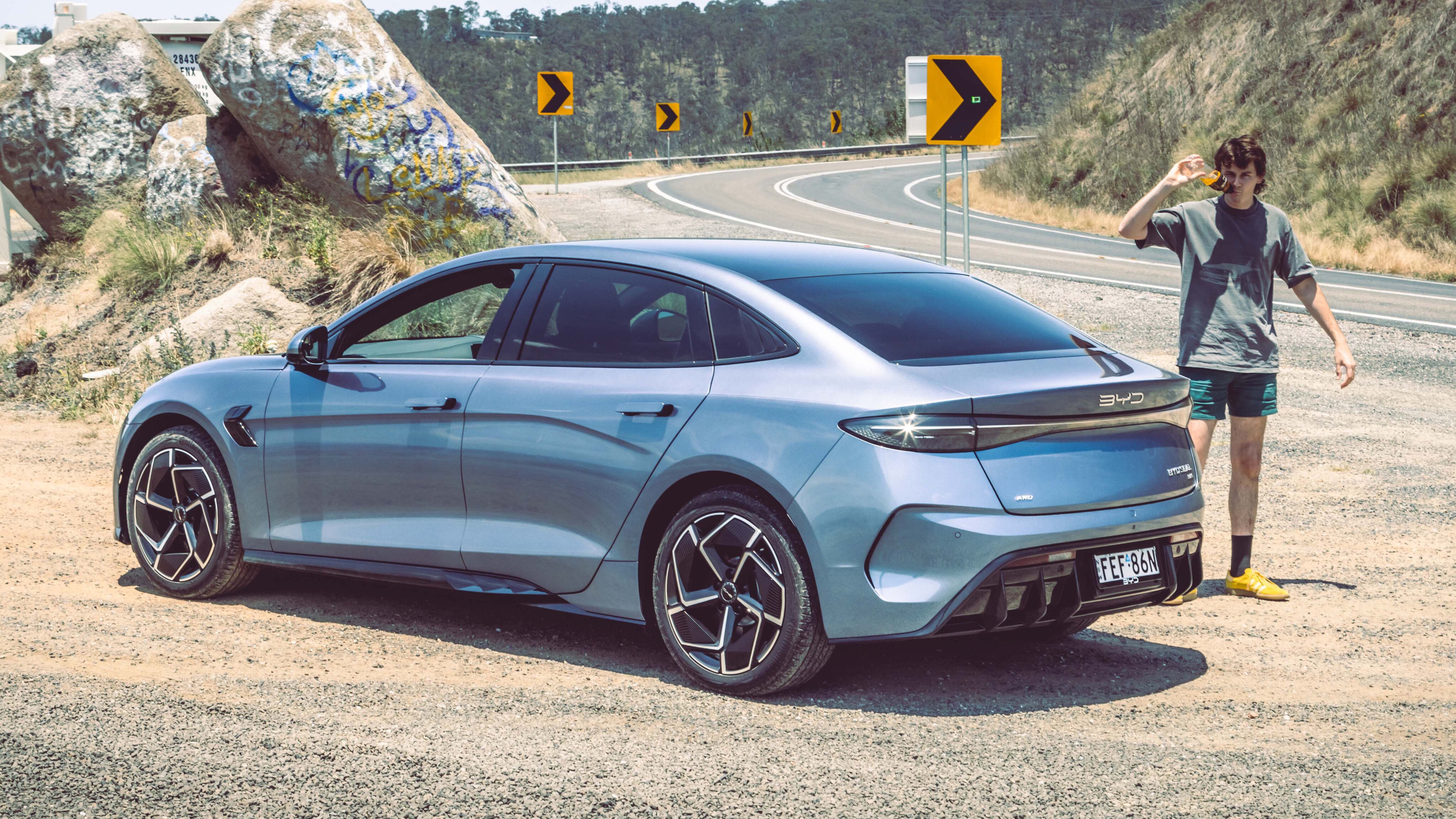
It might seem unfair, but because the Seal is so sharply priced, we decided to line it up against the Tesla Model 3 RWD.
Though a Long Range AWD ($71,900) is closer before options, this base Tesla ($61,900 before on-road costs) tester has been specced up with a white interior ($1500), ‘Nova’ 19-inch alloy wheels ($1800), and Stealth Grey paint ($2300) bringing its list price up to $67,590.
At the other end of the price spectrum is Hyundai’s Ioniq 6, included as our ride and handling benchmark after the sleek ‘streamliner’ defeated the pre-update Model 3 in a recent comparison (Wheels July 2023).
Note: This story previously stated that the Model 3 RWD develops 208kW, this is according to EVDatabase and government compliance documents. However, other sources claim different figures. For clarity, the output has now been removed.

Unfortunately, we weren’t able to source an MY24 Polestar 2 for the comparison. Nor was there a price-competitive Ioniq 6 available for testing.
Instead, we have the $83,500 Techniq AWD with 239kW and 605Nm, which has been replaced by the Epiq AWD ($85,500) for 2024. While it may be around $15K more than the others, it’s the closest the Ioniq 6 gets in spec to the Seal and Model 3.
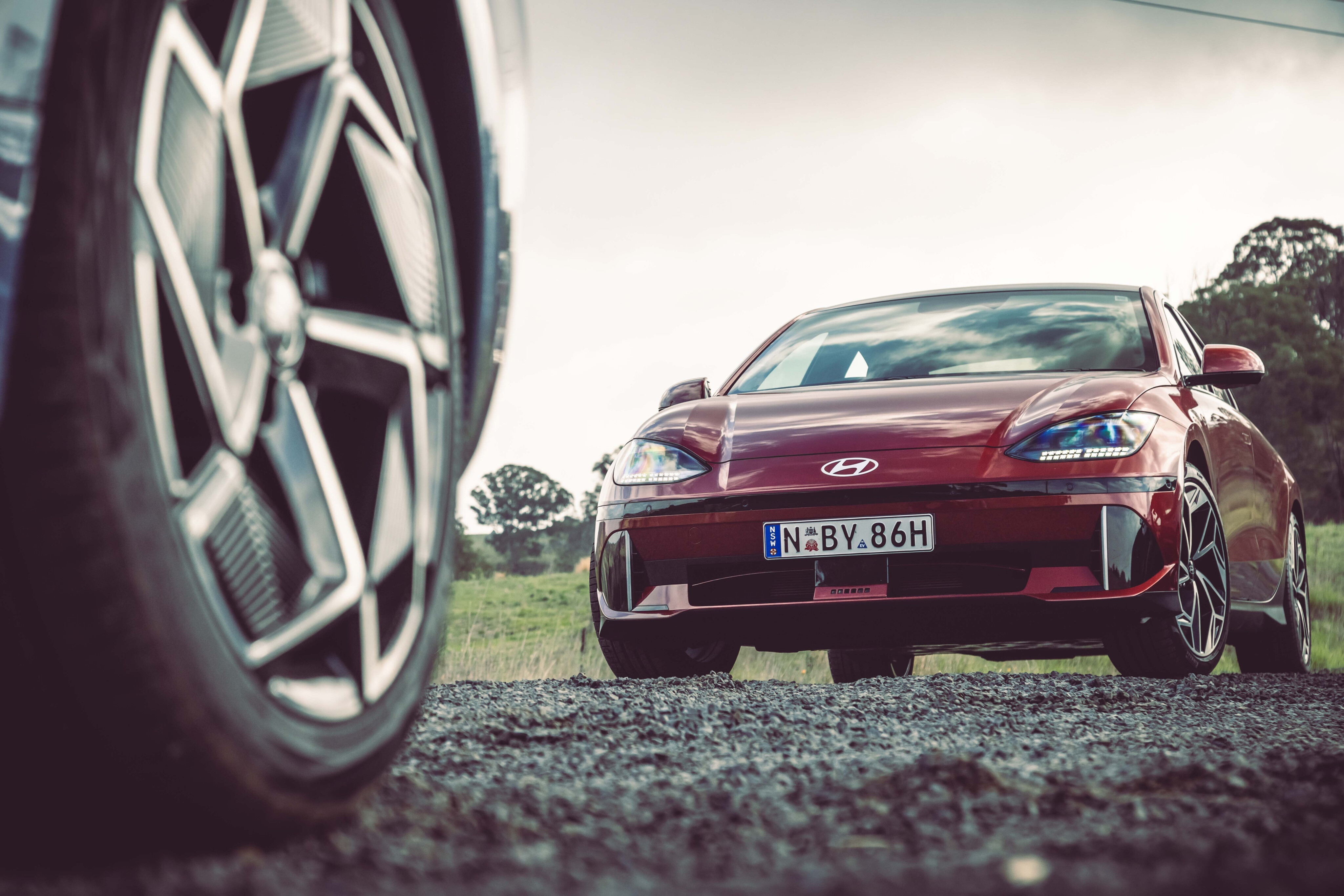
Interior comfort, space and storage: which is the best family car?
Beyond the value equations, each member of this trio offers a vastly different interior design, yet none does so at the cost of practicality.
The Seal’s cabin is sporty and modern, and size-wise it sits in the middle of the other two for exterior dimensions (at 4800mm long) translating to good cabin space.
Aside from the kooky rotating touchscreen, the touch points are remarkably nice with quilted leatherette upholstery and colourful highlights to catch the eye. The heated and ventilated seats are agreeable if lacking under-thigh support, and the twin wireless charging pad is excellent.
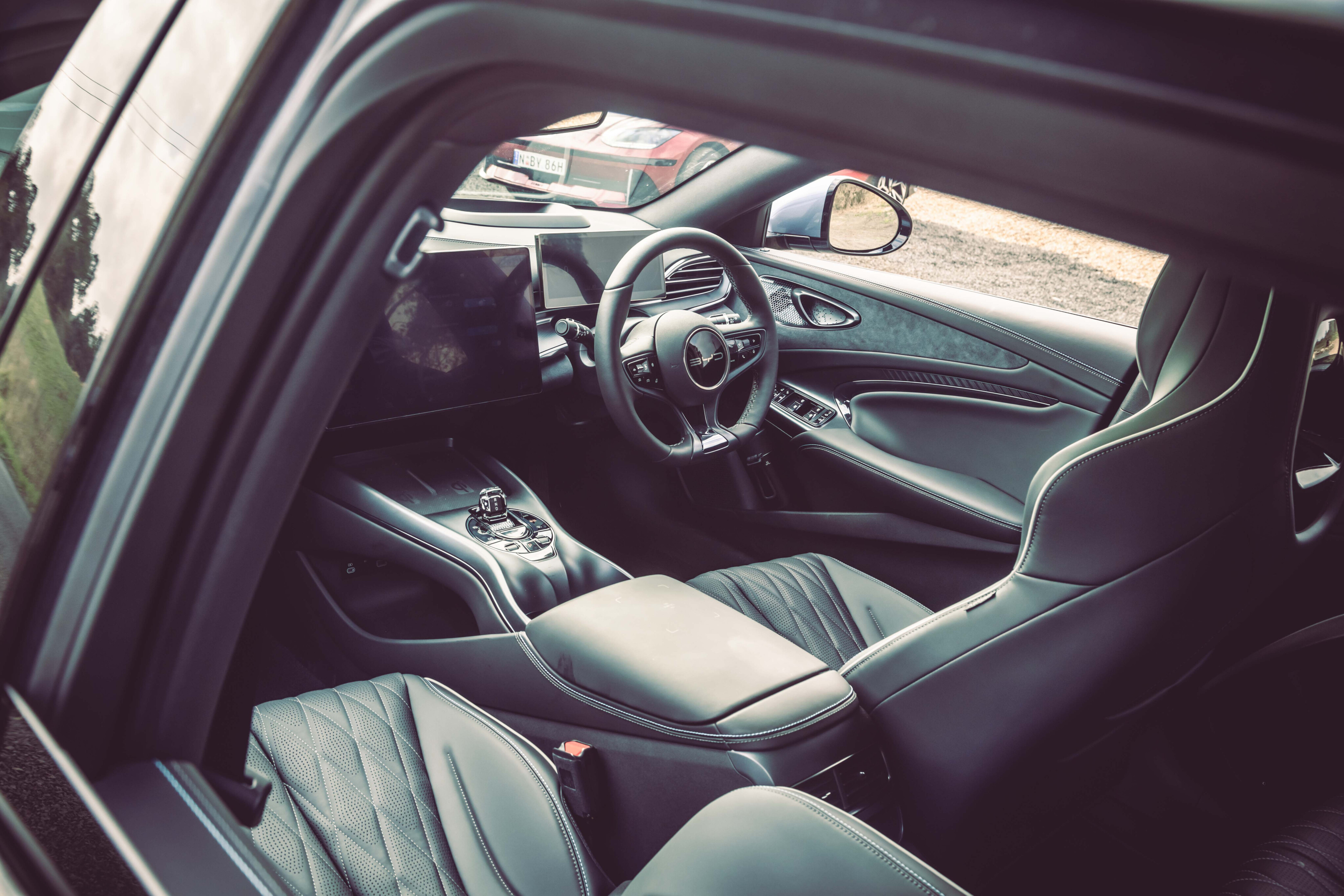
Storage spaces in the Seal are good, with a space under the floating console where USB charge points are found and you could store a small bag or tissue box, though the space under the armrest isn’t huge and nor are the door bins.
Thanks to the unique Blade battery, the Seal’s floor is low, aiding toe and headroom in the rear seat even if, like the others, it’s still a little tight for six-footers. The bench’s width is generous and three kids would fit across the back.
There are two adjustable vents, a pair of USB charge ports, and a fold-down armrest to boot.
The Hyundai Ioniq 6 is 55mm longer than the BYD and this translates directly into legroom. Yet due to the E-GMP platform’s skateboard construction, the Ioniq 6’s floor is higher – crimping toe and head space for taller passengers.
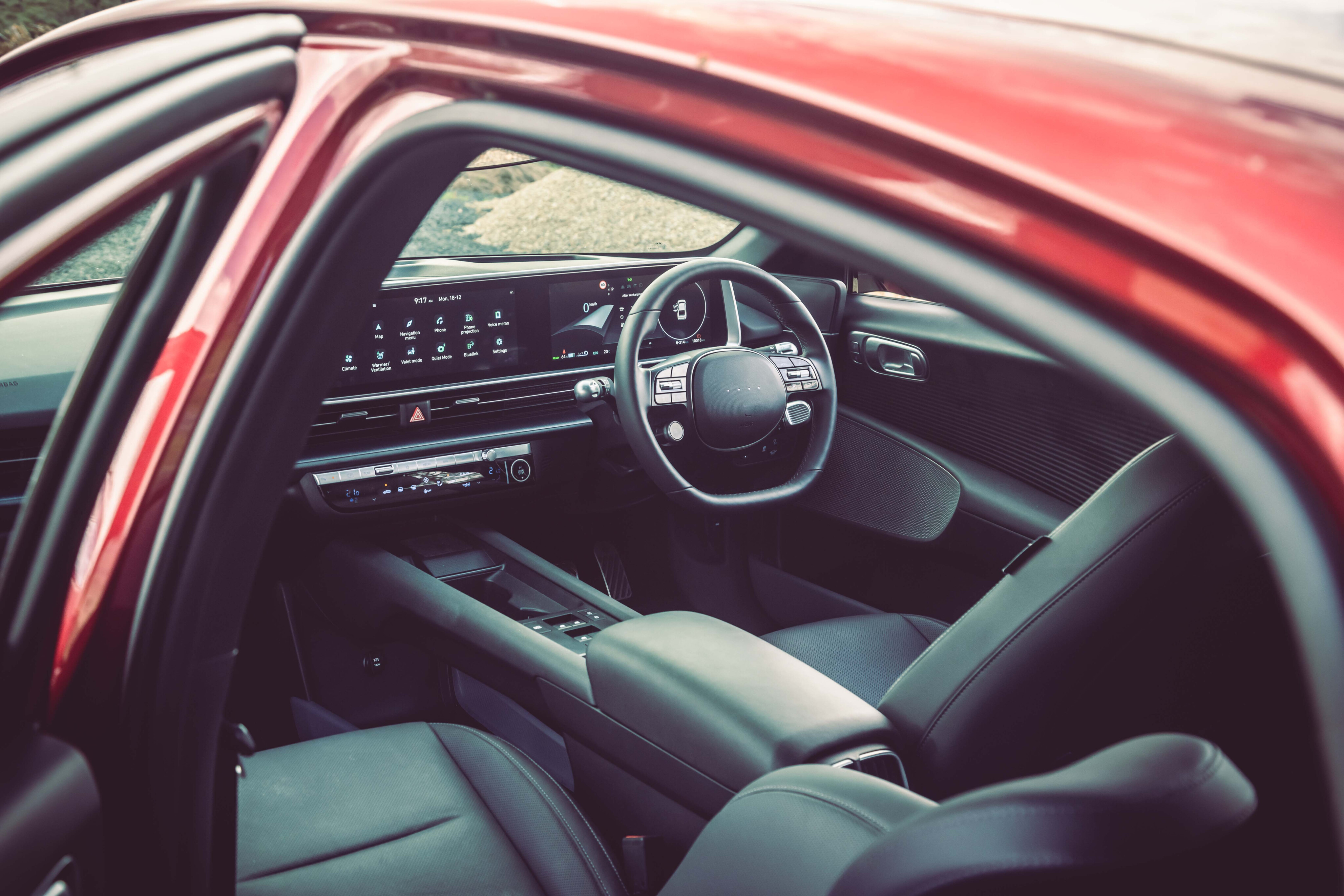
Amenities are identical between the Seal and the Ioniq 6, which makes the Hyundai no more usable for adults in the back.
For kids, it’s a different story. Without a full-length glass roof, the Ioniq 6 stays much cooler in the sun. It also has dark tints on the rear windows and a high beltline that should help lull little ones to sleep.
In the front, the Ioniq’s funky cabin and tactile materials are very pleasing. The seats sit a little high, and offer ventilation only in top-spec models, but they are comparable and offer good adjustment.
Cabin storage is great, too, with a mezzanine console that leaves a big space for handbags, a decent, covered centre bin, and doorbins that accept a one-litre bottle. There is a wireless charging pad, two USB ports (one regular and the other type C), and a 12-volt socket.
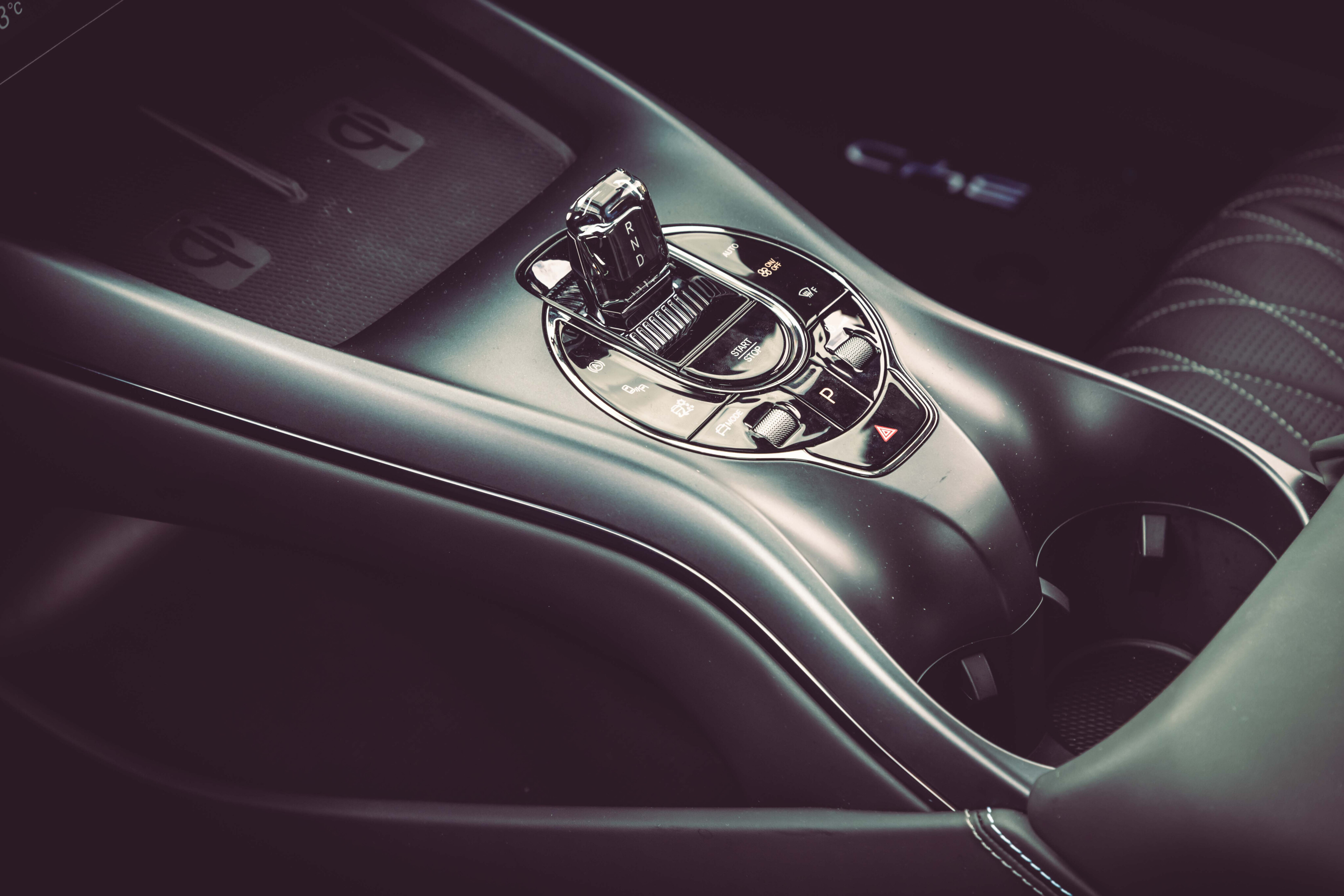
Build quality is also better in the Ioniq 6 – not only inside, with no rattles evident, but outside as well. Interestingly, the BYD’s rear bumper displays a detectably different tone of Arctic Blue to the rest of the car’s body.
Get underneath and you’ll see haphazardly painted components and jagged edges left behind at the BYD factory. Does this affect performance? No, but it indicates a lack of attention to detail.
That's something Tesla has been improving on with the Model 3. This example felt well screwed together and the updated materials are a cut above old 3s, although there was still a rattle from the passenger side B-Pillar with only 500km on the odometer.
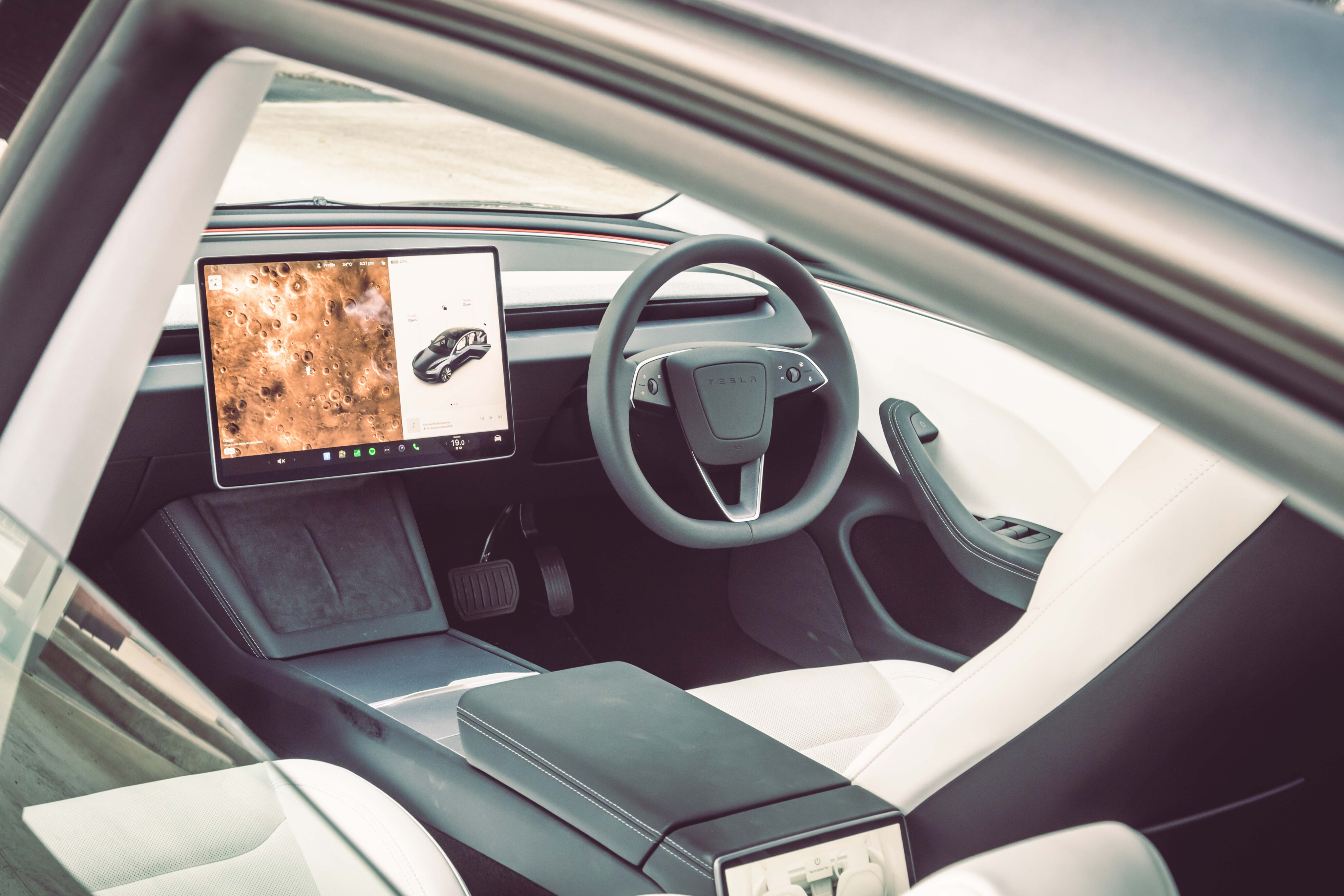
The Model 3's design was once cutting edge but now feels sparse and clinical.
Basic amenities are excellent, with twin wireless charging pads, a deep cubby, twin cup holders, good door bins, and comfortable chairs with heating and ventilation standard.
Usability is questionable; to streamline construction Tesla has ditched indicator, wiper, and gear selector stalks. The controls are now buttons on the wheel with the indicators grouped unintuitively on the left side. We found the touchscreen gear select to work quite well in practice, but not the automatic wiper setting that entirely failed to detect light rain.
Rear seating issues have been addressed with a shapely rear bench with much-improved under-thigh support in the back. Headroom is still compromised by a high-set floor, and you don’t want to touch the underside of the glass roof on a hot day.
There are vents and two USB-C charge points accessible to rear seat passengers, as well as a fold-down armrest (the same as the other two).
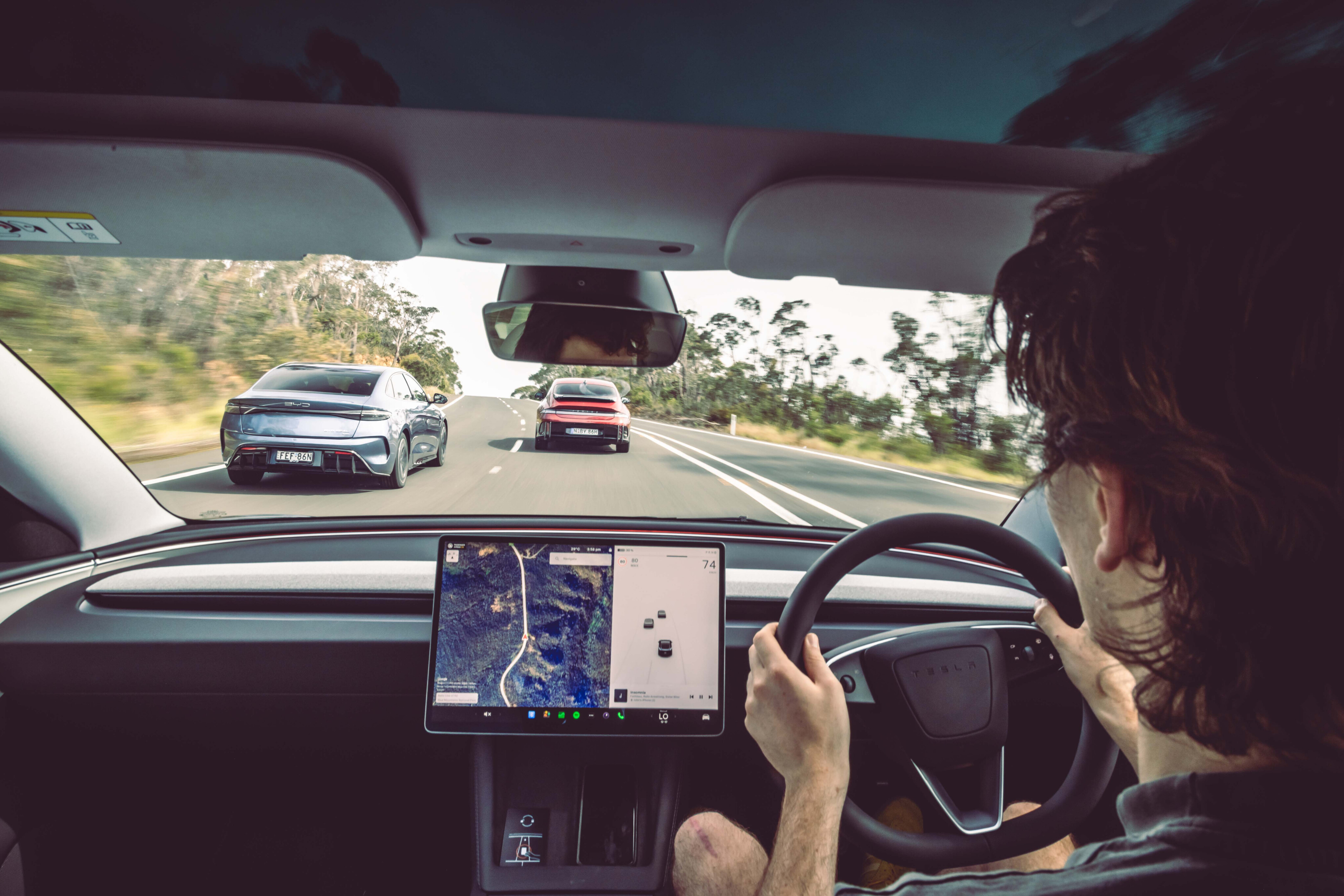
The Model 3 has a silver bullet for road trips, though: an 8.0-inch touchscreen mounted above the air vents that’s connected to the internet, meaning rear-seat passengers can enjoy Netflix, YouTube, games and more – using individual headphones.
One snag that (at time of writing) is yet to play out is the Model 3’s lack of accessible top tether for the middle seat. This means you can’t fit a child seat in the centre, and may mean a stop-sale or recall for the vehicle.
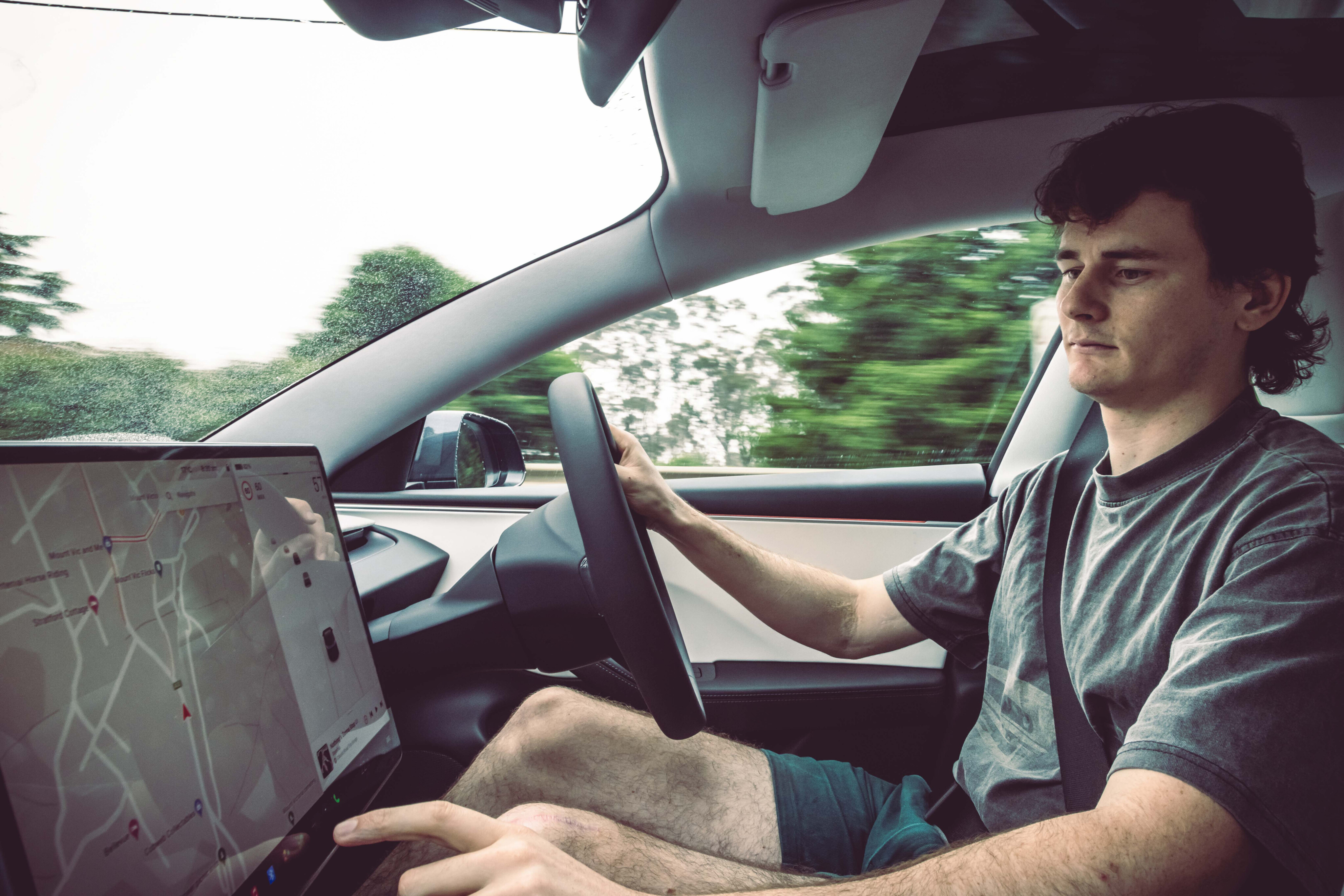
Which has the best storage?
The Seal has the smallest boot (by a measly litre, mind, at 400L) and the loading aperture is narrow. There are also no pull-tabs in the boot to fold the 40:60 backrest.
The lid is power-operated, but there are precious few clever touches and, as we found out on the day, no spare tyre; though this is a common issue across the trio (and at least it has a standard tyre repair kit, unlike the Model 3).
Although it’s much larger outside, the Ioniq 6’s boot is only a litre bigger than the Seal's – although it does have a wider aperture. There are pull tabs to fold the back seats down, though they feel cheap and are fiddly to use – you still need to go and push the second row flat with some force.
The Hyundai’s 14.5L ‘frunk’ isn’t good for much more than a few bags of emergency Haribo; the BYD’s 50L storage box is more useful for cables.

Despite being the shortest vehicle, the Model 3 comfortably has the most luggage space, proving the brand's capacity for showing that a hundred years of experience can still be outclassed by a newcomer.
In the Model 3, there's a 561L space (including a large under-floor cubby) beneath the large pseudo-liftback boot lid that gives the broadest loading aperture of the three.
Add to that a generous 85L under-bonnet storage area and the Model 3 wins the storage space segment.

How good is the technology?
The Hyundai’s system is the most conventional, with a pair of 12.3-inch displays dealing with driving information and infotainment.
Wired Apple CarPlay remains in the Ioniq 6, though with over-the-air software updates this may be added in the future. Hyundai’s menus are logically structured and the system has approachable graphics. The navigation features live traffic, though the maps look rudimentary next to rivals.
With Hyundai’s Bluelink system, owners are able to control functions such as lock and unlock, pre-heating or cooling, and the ability to send navigation destinations from phone to car. However, the phone does not function as a digital key.

BYD offers similar control with its app, and no ability to start and drive away in the car. The Seal also ships with an NFC card (and dorky white square on the armrest to prove it) as well as a key fob.
The Android-based operating system runs on a 15.6-inch tablet touchscreen that can be set in portrait or landscape orientation (yeah, we’re still not entirely sure, either) is responsive to the touch, but can be confusing at first with an odd menu layout.
Wireless Android Auto is supported, though CarPlay is cabled. There is one regular USB and one USB-C port in the front as well as a 12-volt socket, and the 12-speaker Dynaudio sound system is perfectly adequate.
All bar fan on/off, defrost and auto settings for the climate control are found in the touchscreen, including vent direction. Annoying enough in a Taycan, in the Seal adjusting where you want cool air is not in the least bit intuitive.
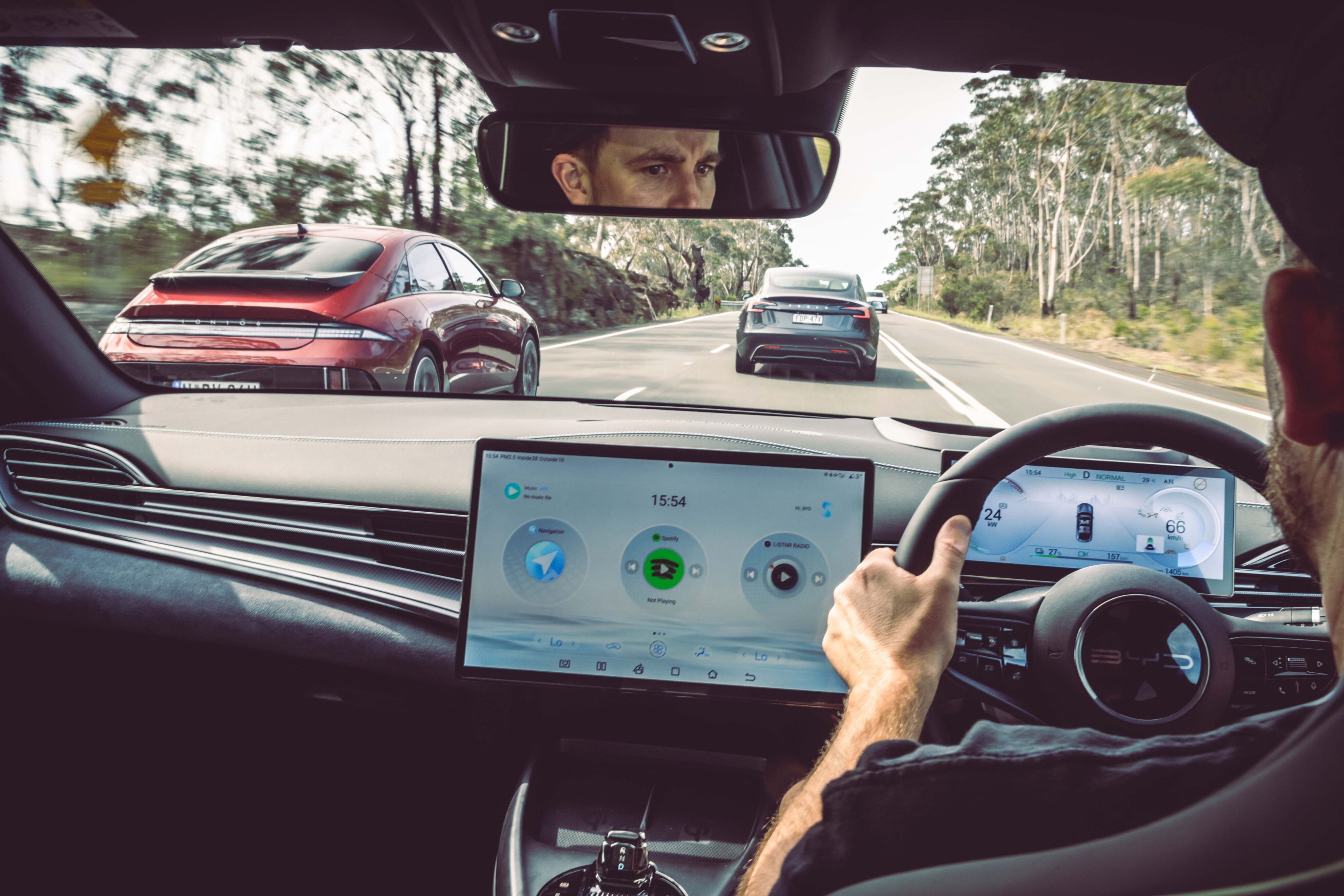
The Seal's digital driver display is small and not very highly featured, yet it gives all the basics such as speed, consumption, range, tyre pressures and outside temperature.
Tesla, of course, does without any sort of digital driver’s or head-up display, meaning you need to glance over at the central tablet to see your speed and road sign information.
But the rest of the package remains class-leading, even nearly five years on from launch. For the 2024 update the screen has become thinner with more powerful processors to run the same basic software with over-the-air updates.

The Model 3’s navigation is second to none, with Google Maps-like clarity for the streets, brilliant live-traffic setting and – most importantly – clever online routing that takes into account charge levels and distance to destination which can be invaluable on longer drives.
Like the Ioniq 6 and BYD, you can send locations to the Model 3’s screen from your phone. (Though it's tough luck for drivers who like to use Waze.)
The phone also works as a fully digital key, allowing control over charging, ventilation, lighting, Sentry mode, and giving the ability to unlock and drive off without the standard-issue swipe card.
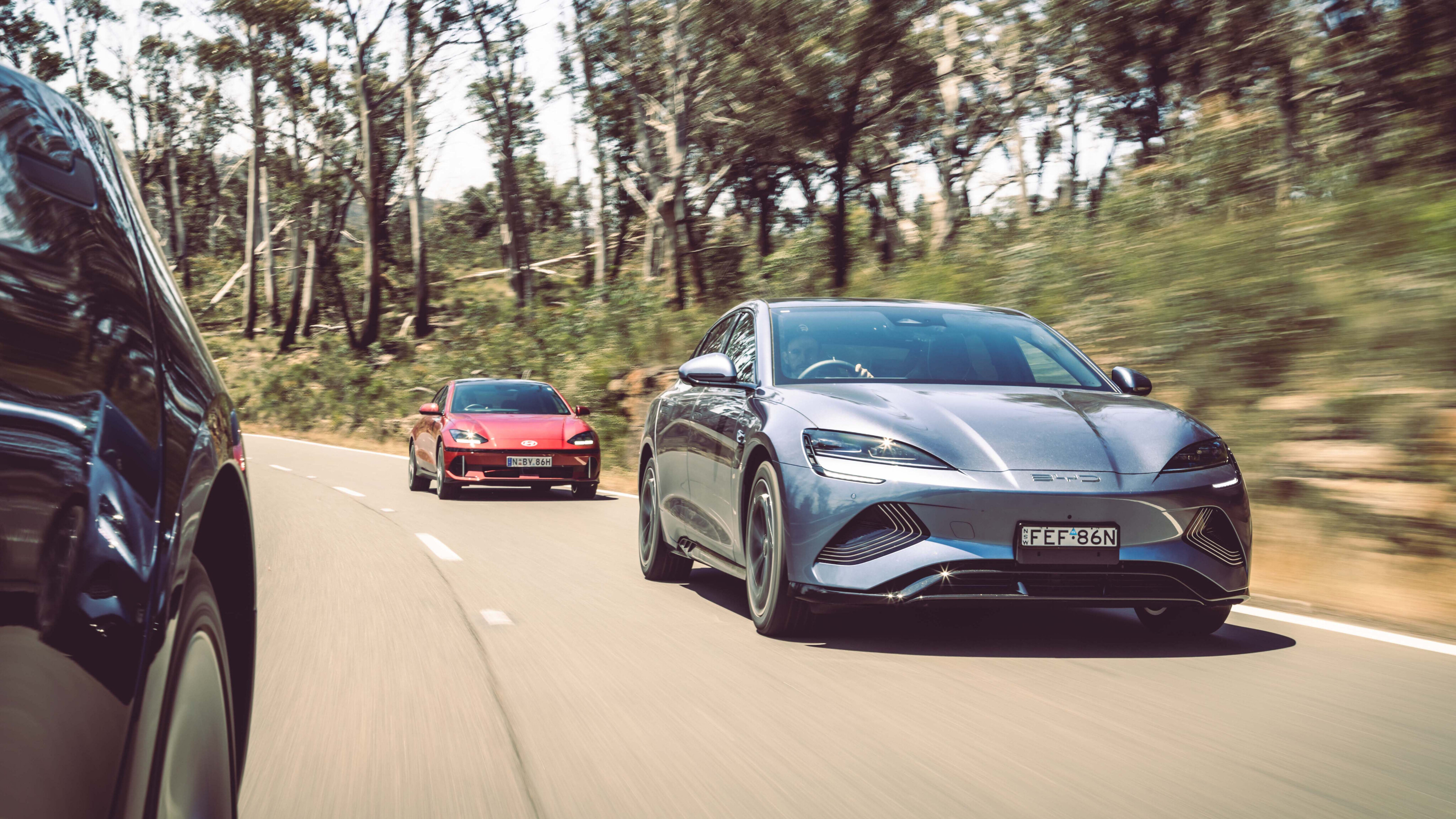
Range, charging and efficiency
Despite having the smallest battery (57.5kWh) the Model 3 RWD has a similar WLTP range (513km) to the Seal Performance (520km) with its much larger 87.5kWh pack.
The Tesla and BYD’s LFP batteries are more welcoming of 100% than the Ioniq 6’s nickel and cobalt-rich pack, though the Hyundai’s 77.5kWh pack gives it a longer 545km WLTP driving range.
On test, the rear-drive Tesla was the clear winner for efficiency with its trip computer reading 14.1kWh/100km, giving it a real-world roving distance of about 400-410km but you'd expect that from a rear-drive vehicle.
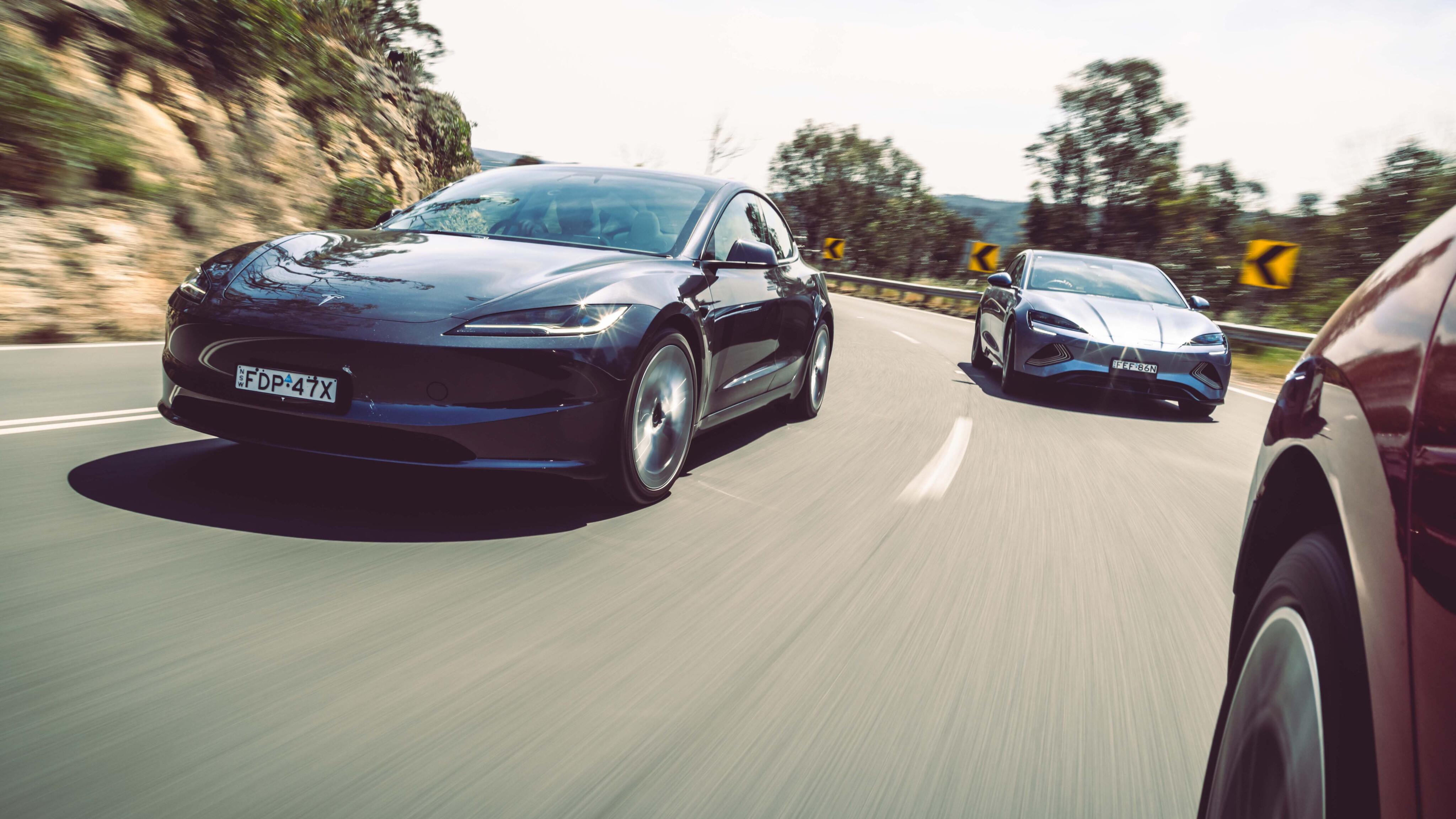
The Ioniq 6’s bigger battery (77.5kWh) meant it would get 450km before running flat (at 17.2kWh/100km) and the BYD’s 17.5kWh/100km consumption figure would carry you 471km – closest to its WLTP rating.
It's worth noting that this comparison involved this trio being driven for photography and over hilly and twisty terrain; expect everyday driving to produce better efficiency results than what you see here.
At the public charger, it’s the Ioniq 6 that’ll get you on your way fastest –replenishing 10-80 per cent in a mere 18 minutes compared to 25 minutes in the Model 3, and a glacial 37 minutes in the Seal.
Both the Ioniq 6 (7h 10m) and Model 3 (6h 30m) will also accept 11kW AC for dramatically faster 0-100 per cent charging at home than the 7kW Seal (11h 45m).
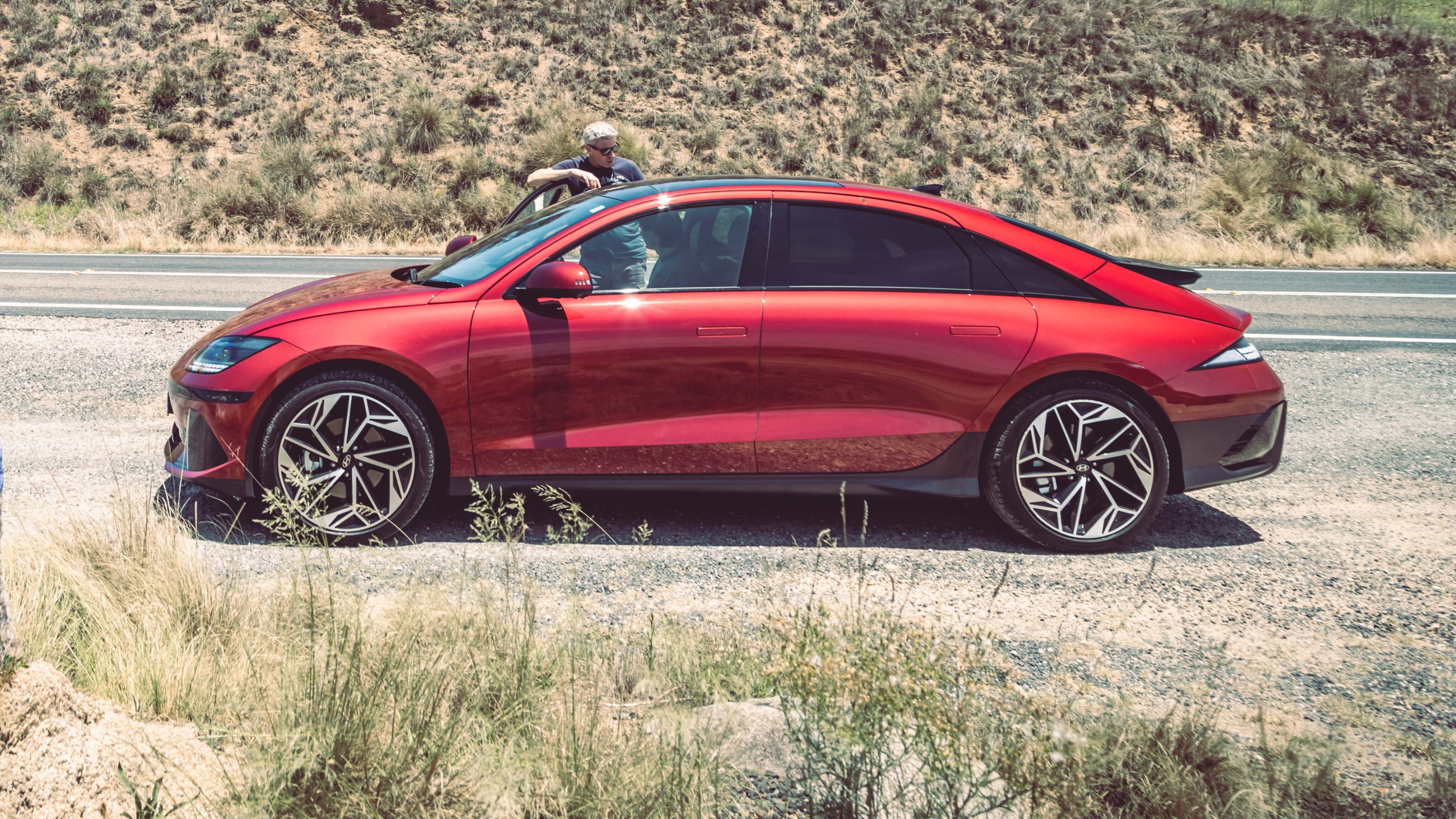
What are they like to drive?
Partially because of how sparse the cabin is, and also owing to the Model 3’s smaller size, it's meaningfully lighter than its rivals (1836kg); 242kg less than the Hyundai and a huge 349kg chunk off the BYD Seal.
The updated Tesla still isn’t perfect, though. It’s softer in spring and more compliant in damper than before (with new suspension knuckles and bushings) but there doesn’t seem to have been a major kinematic overhaul.
Where its firm ride previously jiggled occupants around but resisted body roll and bottoming out quite well, the less fidgety MY24 model isn’t as dynamic and is more eager to find its bump stops through big compressions. The suspension also remains noisy in its operation.
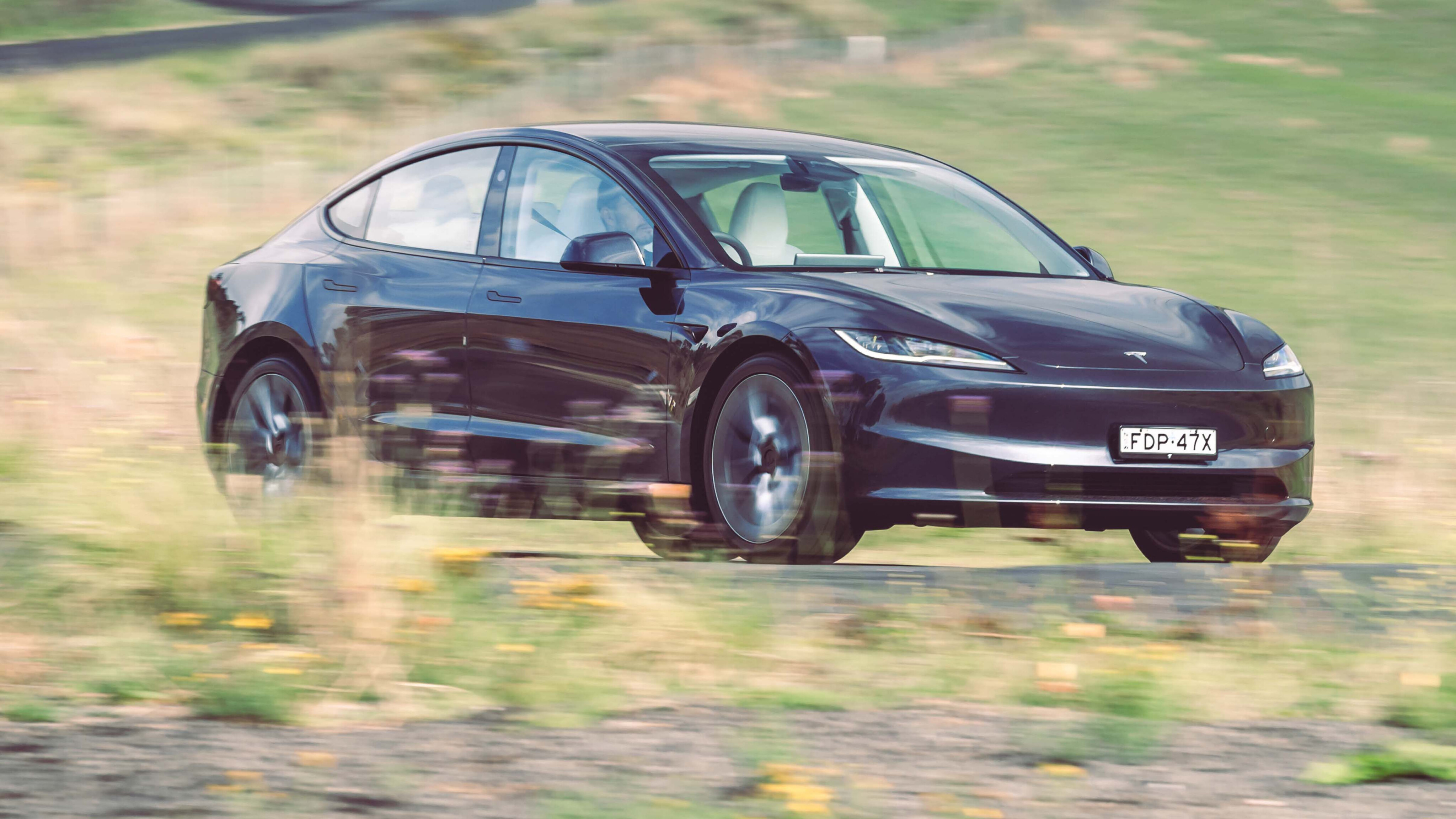
It is an overall improvement, aided by the new eco-focused Hankook Ion Evo 235/40R19 tyres that have less grip than the sporty Michelins used previously but are quieter and more compliant.
The Model 3 still doesn’t have the sophistication to shrug off mid-corner bumps but it is a natural and calm companion on a twisty road with a reassuringly proactive stability control system.
It only takes a few stops to acclimatise to the throttle calibration and strong regen, from which point driving with one pedal is a joy. It’s nippy, too, able to hit 100km/h in 6.1 seconds.
Following from Hyundai’s lead, Tesla has also implemented blind-spot cameras that flash a picture onto the centre screen while indicating. This helps identify vulnerable road users such as motorcyclists when turning.

Aside from poor rear visibility and obtrusive A-Pillar, the Model 3 is a perfectly fine vehicle around town with a quick 2.1-turn lock-to-lock steering system that’s light and easy (though not the last word in feel).
Tesla steering, however, is by far and a way more pleasant than the BYD Seal’s. In Sport mode, the Seal’s steering is stodgy and heavy in a straight line, yet when you add more lock it lightens, offering no resistance to convey how you’re loading the front tyres. Normal and Eco are no better, either.
The BYD’s four-piston front brakes look serious and provide decent stopping power, though the pedal response is spongey and difficult to modulate compared to the Tesla’s. Using the brakes also pitches the weight forward dramatically, making the Seal feel unsettled in corners.

An underdamped rear end fails to control the Seal’s considerable mass and leaves the poorly calibrated ESC tune struggling to save the day.
The Seal’s throttle response is also delayed (and there’s no one-pedal mode available), making it tricky to meter out that huge 390kW/670Nm lump of grunt without overstepping the grip of the Continental EcoContact tyres.
That said, we don’t doubt the claimed acceleration claim – the Seal Performance is organ-rearrangingly quick off the mark. Without any type of locking differentials (beyond torque vectoring by braking), though, it’s a fast car that feels scrappy and vague.
Throttling back to normal speeds and the Seal experience is not a whole lot better. Soft suspension moves a lot over large compressions and occasionally floats in the rebound phase, yet small stutter bumps make the body fidget. It’s inconsistent, and a significant re-tune of the Seal’s trick frequency selective dampers is needed to iron out these issues.
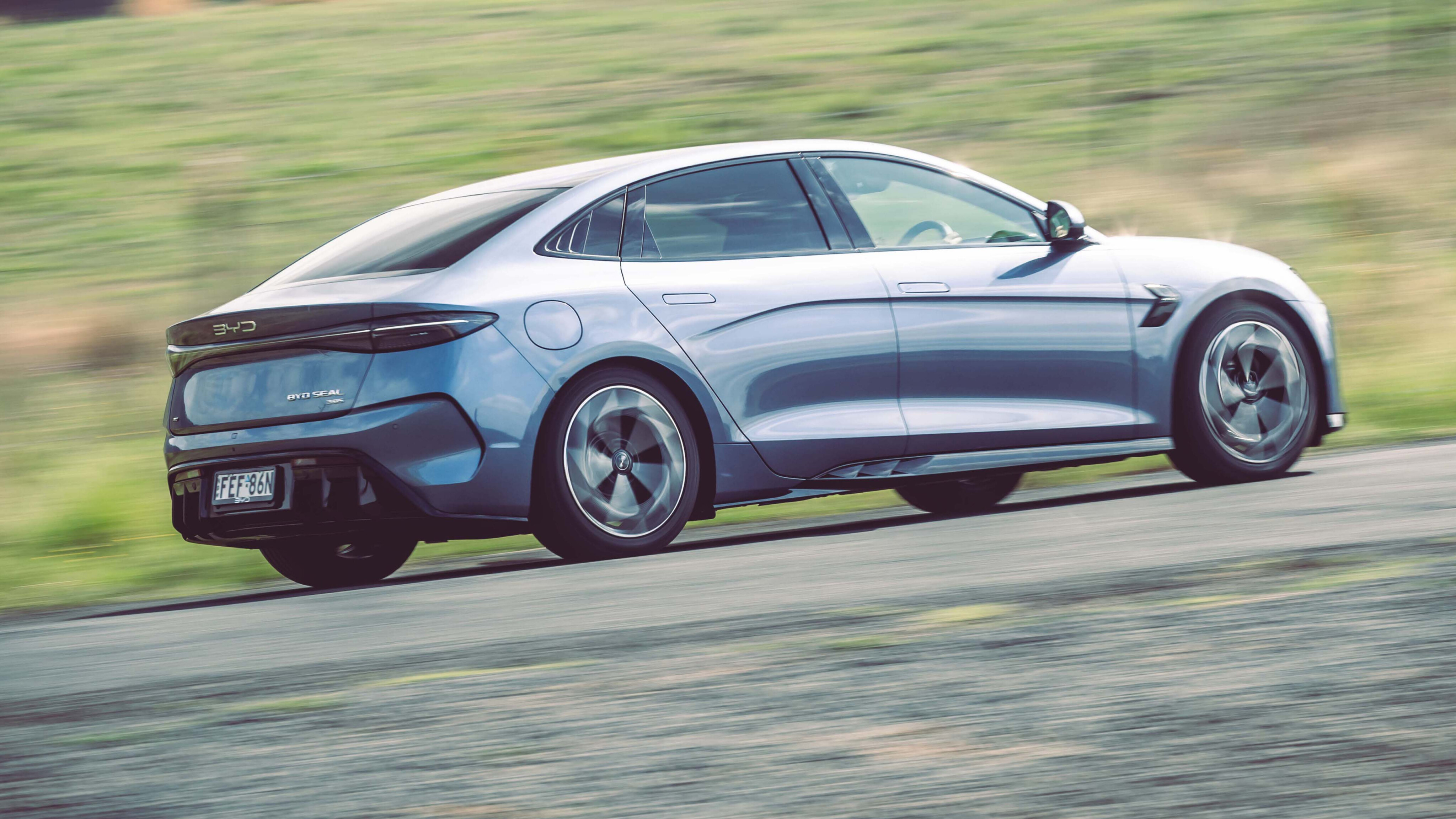
BYD has made a big song and dance about the Seal’s Blade battery being structurally integrated.
It promises to make a stiffer body and lower the battery’s stack height, though the Seal had the most pronounced cabin shake over rough roads, suggesting it lacks rigidity where it counts.
Hopping into the Ioniq 6’s high-set driver’s seat justifies its inclusion. It may be nearly $15K dearer but you can immediately see where that money’s gone. The steering builds weight naturally to communicate how hard the 245/40R20 Pirelli P Zeroes are working, which is not only good for driving enjoyment but also confidence and safety in inclement weather.
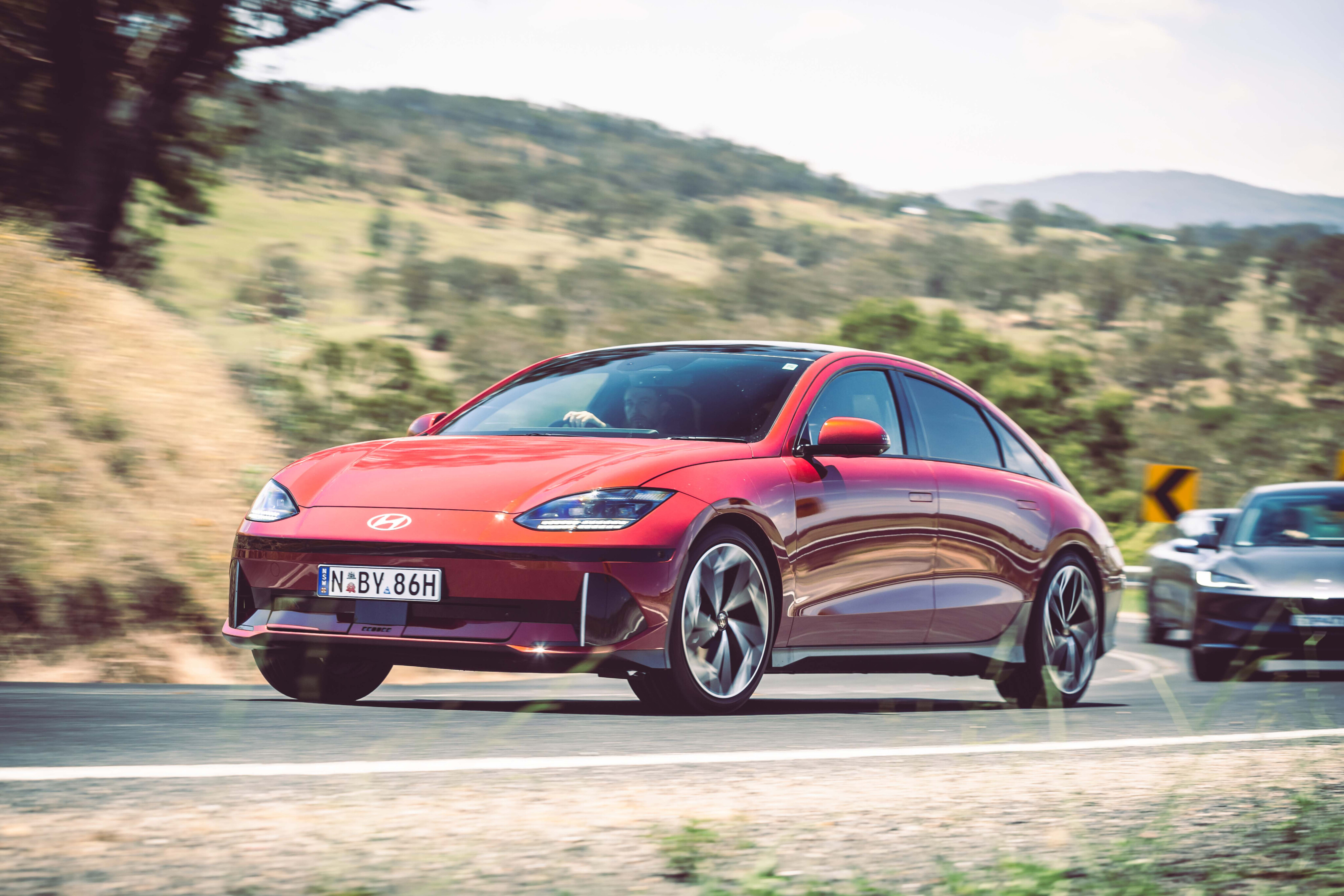
The Ioniq 6’s weight remains balanced between front and rear axles giving a secure, steadfast feeling on the road and its natural brake pedal is connected to powerful stoppers.
Drivers also can adjust regenerative braking power from light to full one-pedal mode – and the calibration is right up there with Tesla’s.
Outputs are rated between the other two, with this twin-motor example developing 239kW and 605Nm for a very respectable 0-100km/h sprint time of 5.1 seconds. Unlike the Seal, this AWD EV never feels ragged under full power.
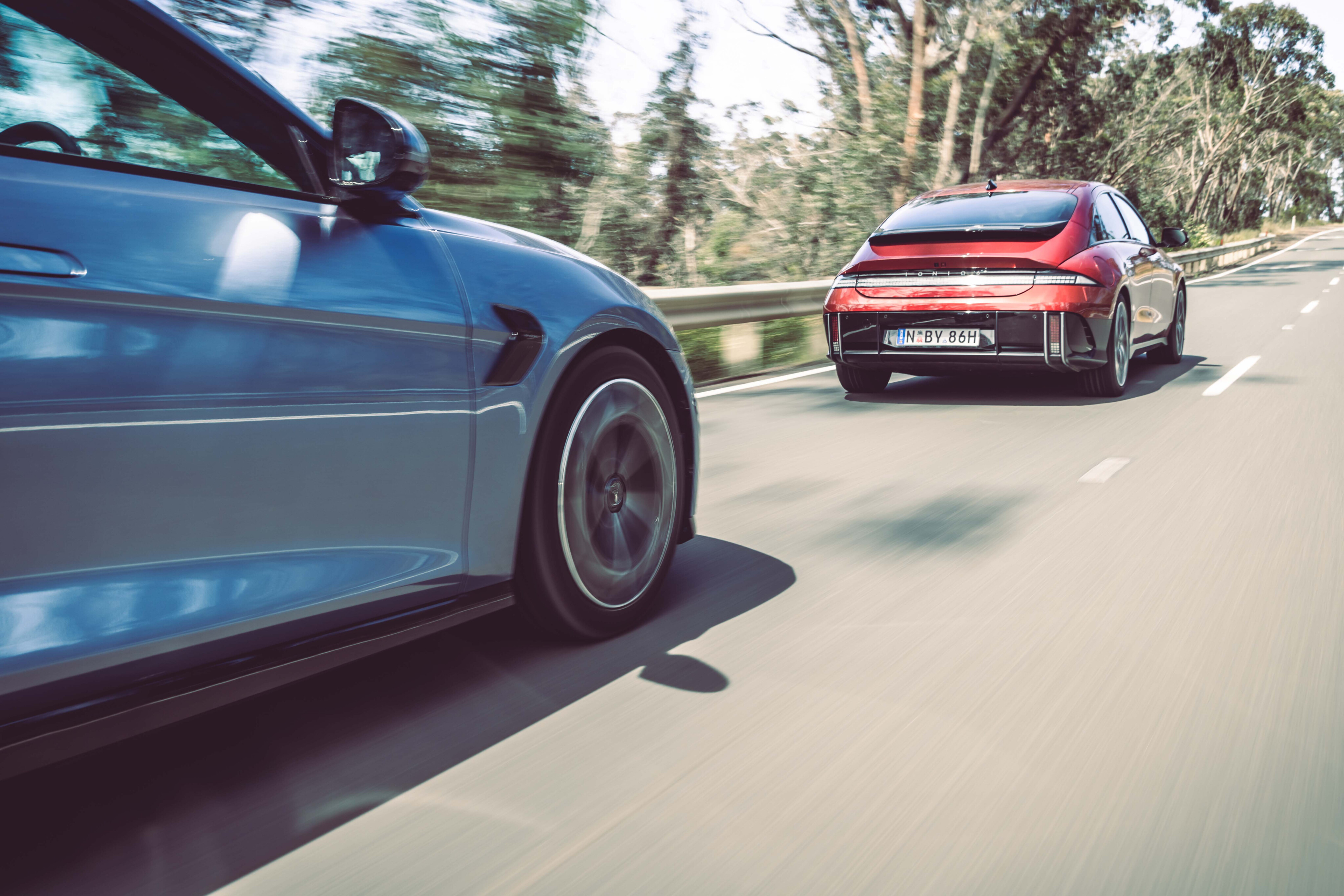
The Hyundai’s drive modes are easily accessible on the two-spoke tiller and make a real difference.
Eco is genuinely useful around town, dulling throttle response for Driving Miss Daisy. Normal suits everyday antics and Sport (which brings with it red cabin lighting from the Cyberpunk square LEDs) amps throttle response and adds weight to the steering – it’s properly engineered and developed.
Hyundai’s quirky cockroach shape surprisingly offers the best vision of this trio as well, meaning that although you get a 360-degree camera standard, turning out of junctions and reversing out of unsighted parking spots is most pleasant in the Ioniq.
If any of the terms in this section have left you scratching your head, these articles will help bring you up to speed!
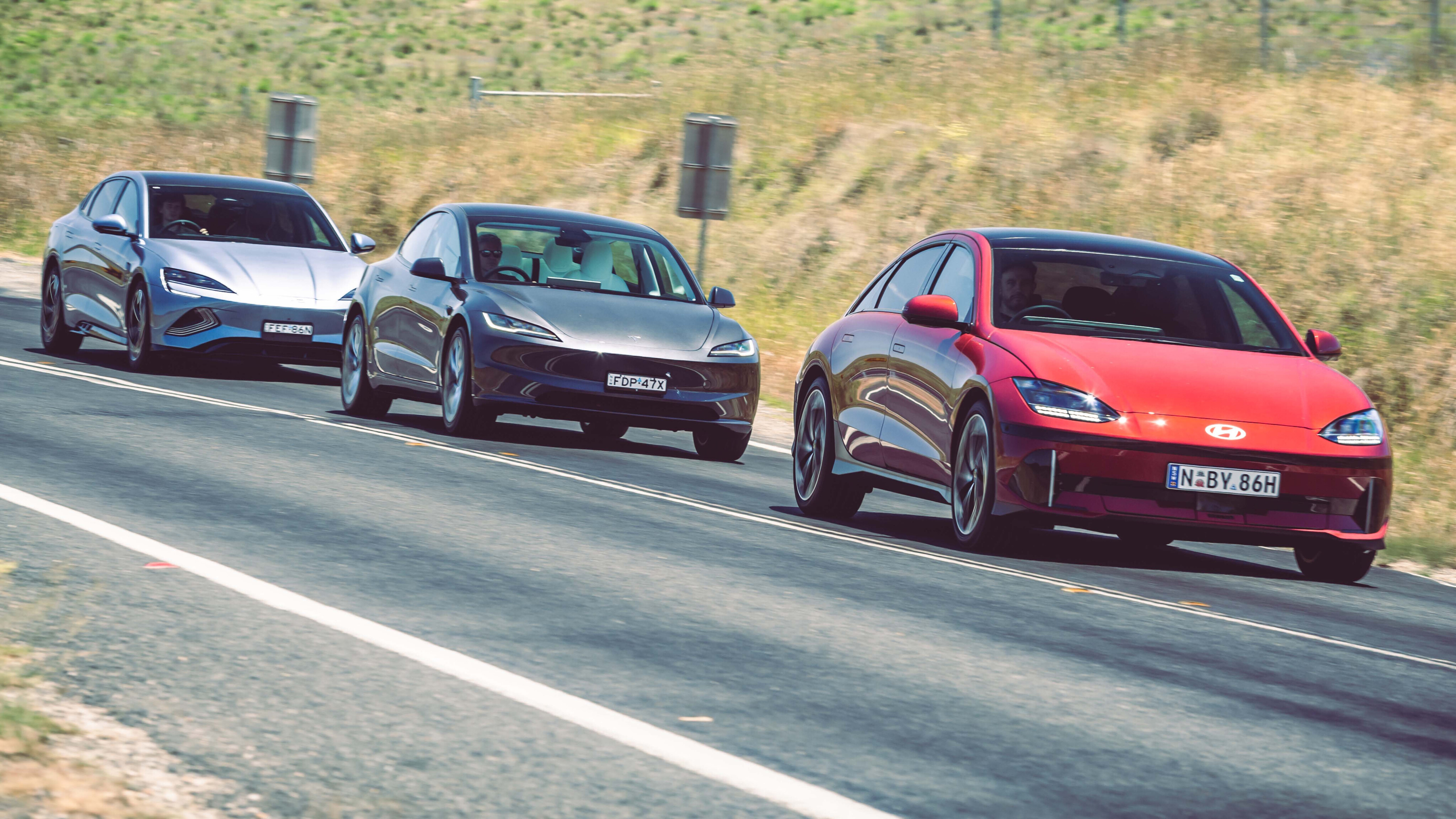
Warranty and servicing
If you value a traditional dealership experience with transparent warranty and servicing standards – as well as an excellently built car with none of the rattles of the BYD and Model 3 despite having an extra 10,000km on the clock – then the Ioniq 6 is worth the extra money.
When it comes to purchasing and servicing, the Hyundai’s traditional dealer experience (online ordering is available) and capped-price servicing plan is easy.
Tesla and BYD offer more digital experiences, though retain larger ‘experience centres’ in urban areas.
Servicing for Model 3 has to be carried out at selected Tesla repair centres, while BYD is a little more open. Like the buying, metropolitan service centres are appearing, but BYD has also inked a deal with MyCar centres to provide broader coverage for Seal owners.
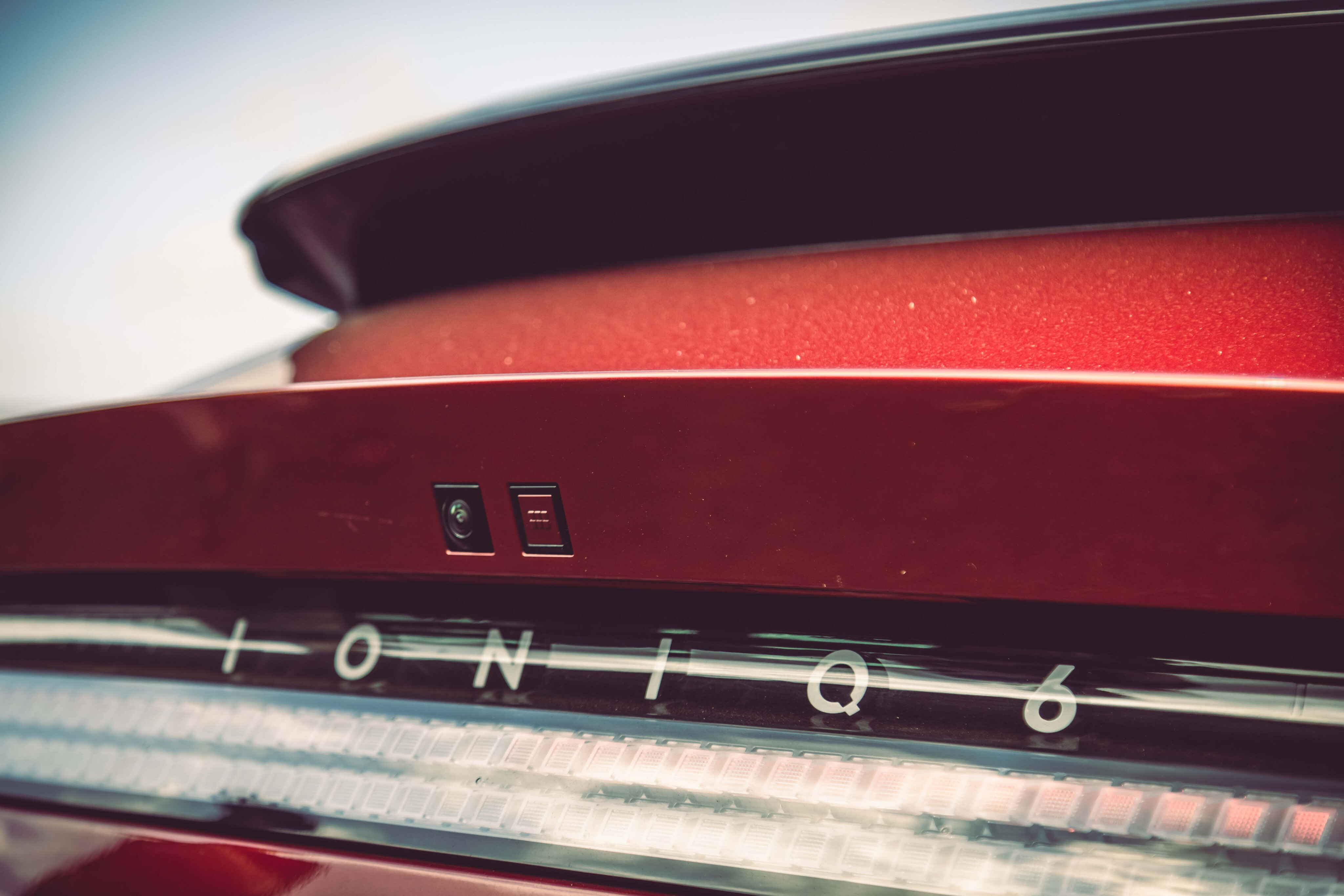
The only snag is that Seal maintenance is due annually, while the Ioniq 6 and Model 3 will go for two years between trips to a mechanic.
Hyundai and Tesla’s warranties are pretty simple – one set period covers everything.
For the Ioniq 6, that’s five-years/unlimited kilometres (or 130,000km if you’re using it as a ride-share vehicle) and the Model 3 it’s a blanket four-year/80,000km.
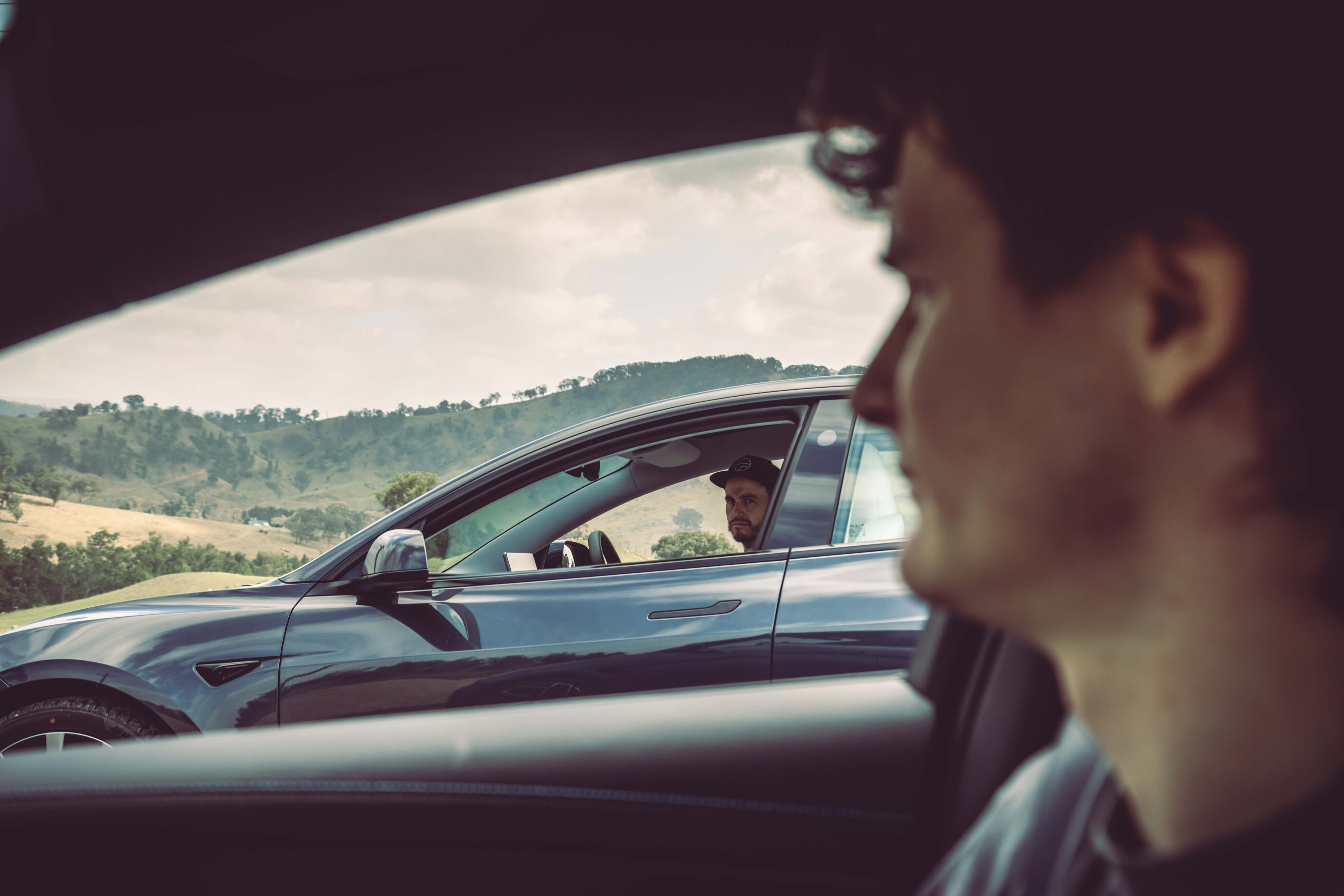
The Tesla’s warranty is on the shorter side, but easy to understand. Things are a little cloudier at BYD.
Where the other two only lean on manufacturers for the tyre and low-voltage battery (both usually a year), the Seal’s six-year/160,000km is longer than that of the infotainment and wheel bearings (three years/60,000km) and lights, suspension ball joints, and the tyre pressure monitoring system (four years/100,000km).
All vehicles are backed by an eight-year/160,000km high-voltage electrics warranty that guarantees the battery will retain at least 70 per cent of its capacity over that period.
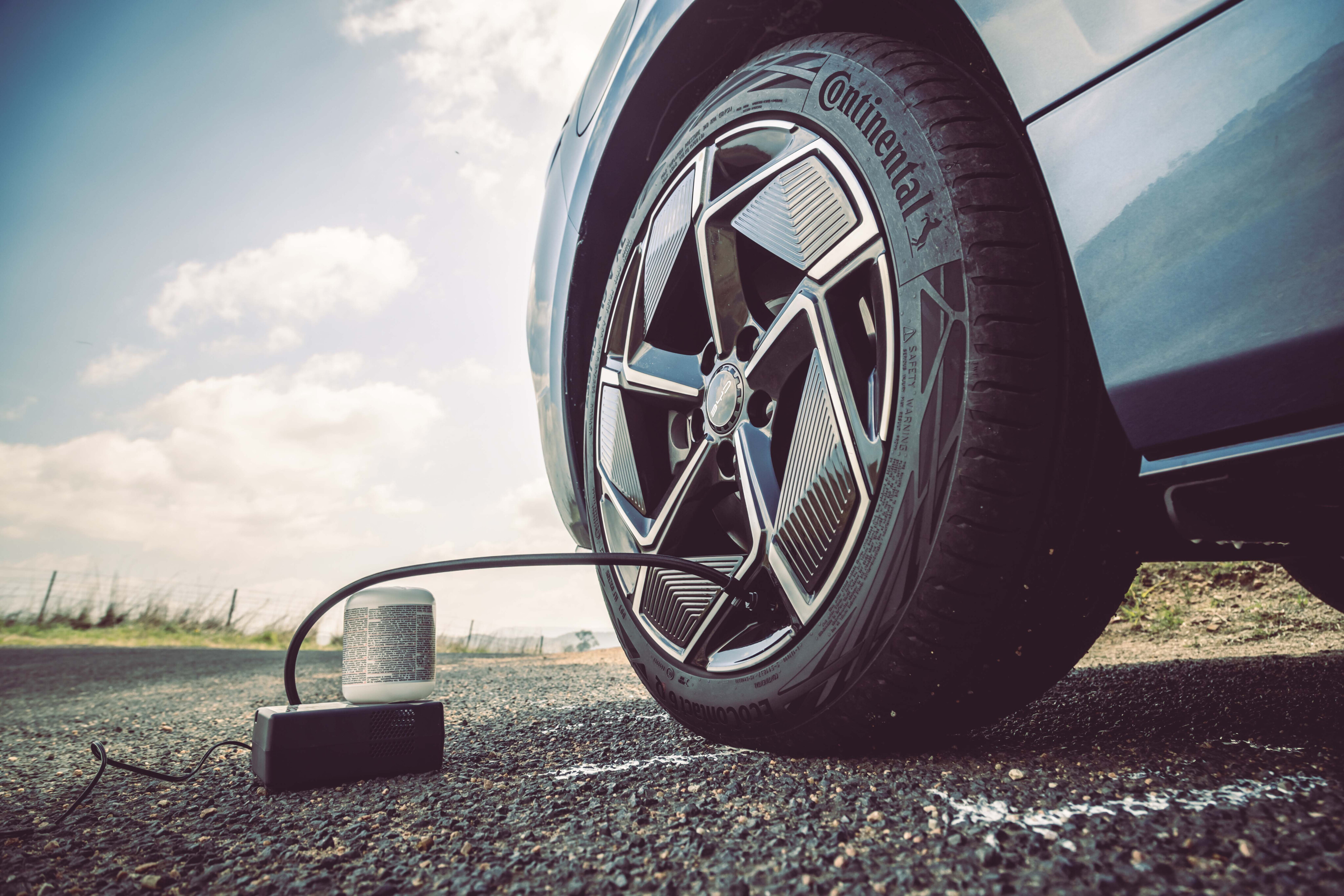
How safe are they?
All vehicles have been rated five stars by ANCAP with the Seal’s test under the latest 2023 protocols – so it should, theoretically, be the safest.
The Seal certainly has all the aids thrown in and, while the non-intrusive ones (front and rear cross-traffic alert, AEB) stayed out of the way during testing, the lane-keep assist and driver-attention monitoring need a thorough re-think for Australian conditions.
Several times the assistant beeped and in a couple of instances “violently yanked” (as fellow tester Jez put it) the wheel. On more than one occasion, these were phantom responses to the fuzzy lane markings and grassy road edges common on our backroads, and could have instigated a head-on collision.
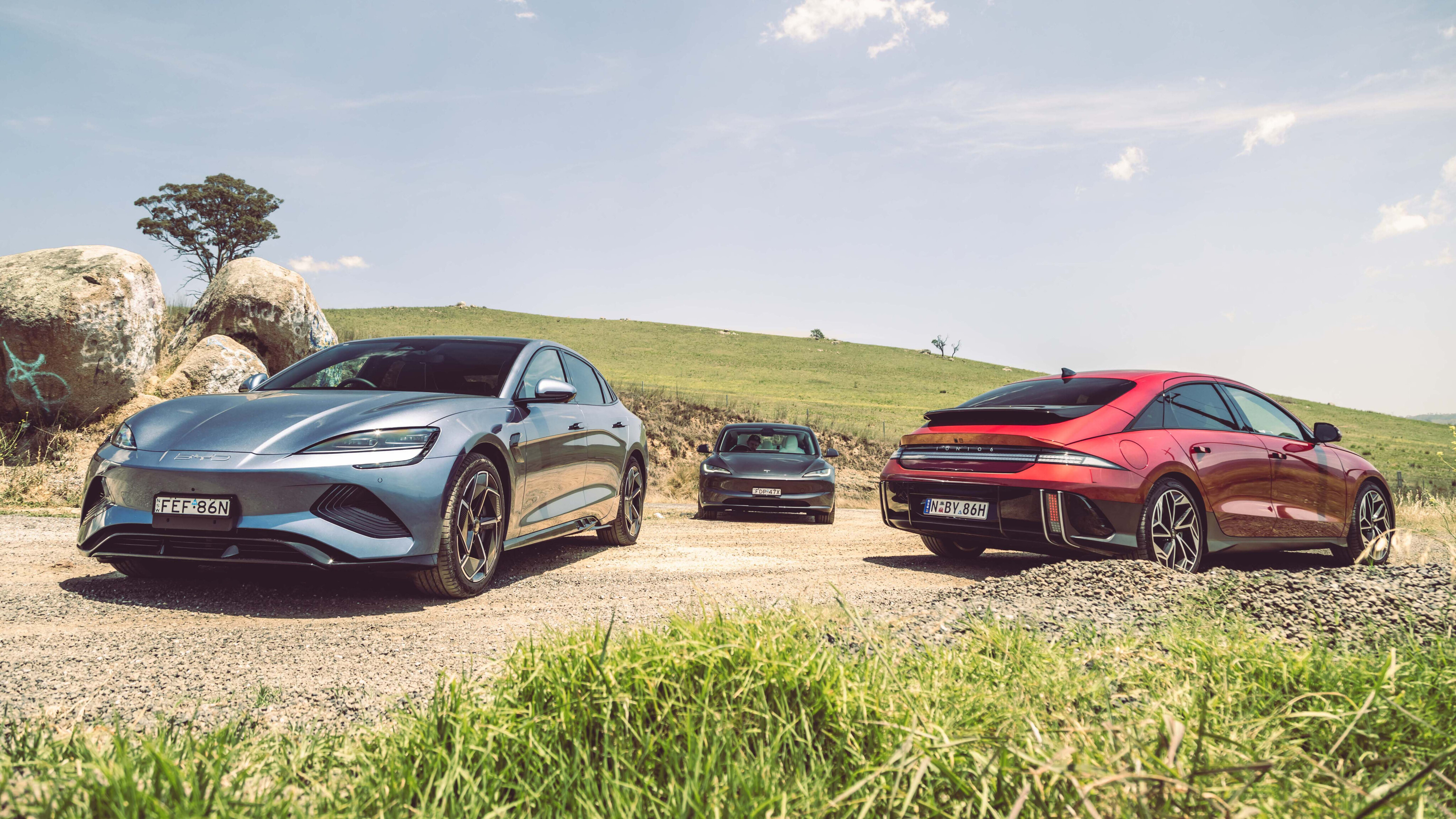
Hyundai’s ANCAP date stamp is for 2022 and it also has all the aids you’d expect.
The speed-limit assist is immensely frustrating and you have to disable the audible warning every time you start the vehicle – it’s lane-keep assist is thankfully better than the BYD’s.
However, when it comes to user-friendly integration, it’s the Model 3. You can turn the ones off you don’t like and they’ll stay that way; the speed limit assist is genuinely helpful (it doesn’t beep!); and there’s Joe mode to hush the alerts for a more serene experience.

Only this particular car’s horrendous auto wiper programming (we’ve had differing experiences in each Tesla example we’ve sampled) that failed to notice any drizzle on our test day, is worth complaining about.
Tesla continues to offer add-ons for its camera-driven driver assist systems. For $5500 you can navigate and change lanes with Autopilot, while Full Self Driving ($10,100) will allegedly stop at traffic lights and stop signs. Tesla has yet to give Wheels a chance to sample these extras in Australia so for the moment we wouldn’t recommend the extra spend.
Like the others, the Model 3 was rated five stars by ANCAP though its date stamp in 2019, and the updated vehicle is now considered unrated.
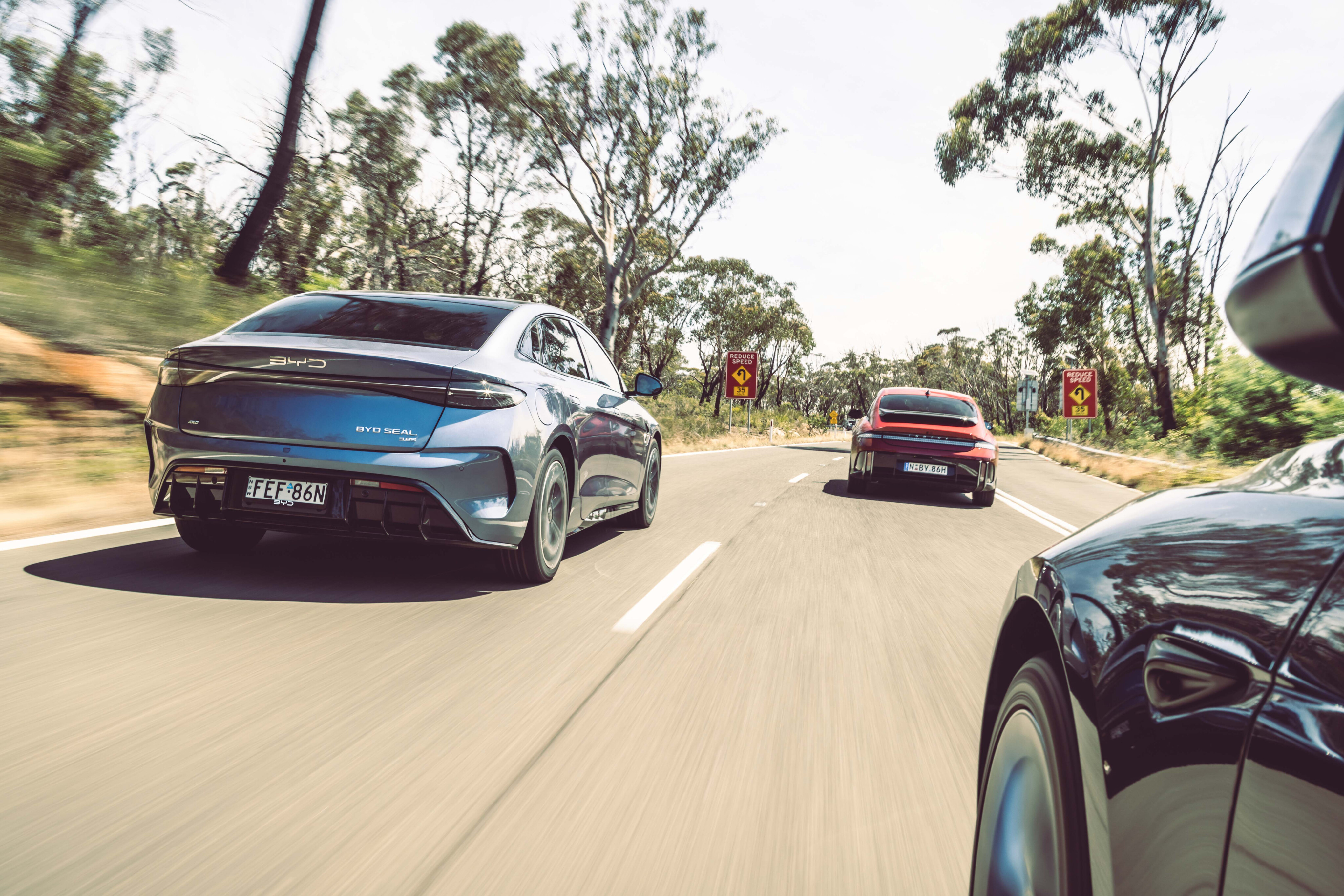
VERDICT
The outright winner is…
It may well be hard to overlook the near $15K premium, but when you drive the Ioniq 6 you can feel where the extra money has gone.
Tech heads may be less convinced by the Ioniq 6’s more conventional infotainment (though it still chats to your phone and recommends charging stations). However, the Hyundai’s steering, ride, handling and ESC tuning are head-and-shoulders beyond the Tesla and BYD.
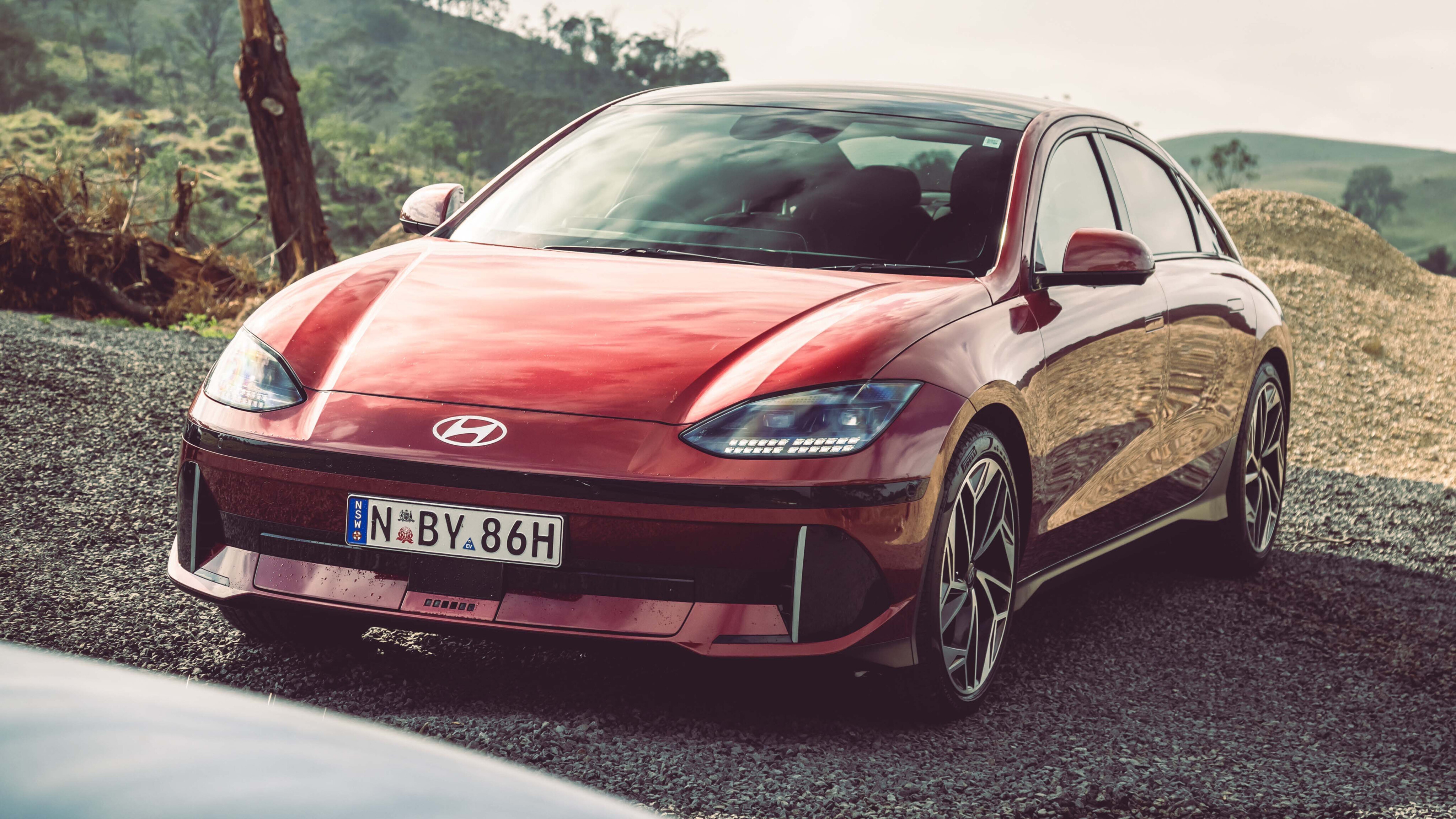
The value pick
The Tesla Model 3, in affordable base guise or mid-spec Long Range, remains the value king in this segment with mid-life updates only making the package more agreeable.
Its connected technology is also a standout, despite being fitted to the Tesla (in some form) since its 2019 release – and the Model 3 is also the most efficient in the real world while offering more-than-adequate dynamics.
Both the Model 3 and Ioniq 6 are more than worthy of consideration, so a test drive and a few hours on the calculator will be the best way to determine which suits you.

If you want the most for the least…
With a comfortable and spacious cabin and good levels of equipment, the BYD Seal promises plenty for not much cash. If that’s all you’re worried about (not resale, on-road performance, charging speed, and affordable ownership/servicing), then it’s the pick.
Unfortunately, the Seal Performance feels mismatched and scrappy when it comes to powertrain and chassis ability; we suspect the lower-power Dynamic or Premium trims (yet to be offered for testing) will be better choices.
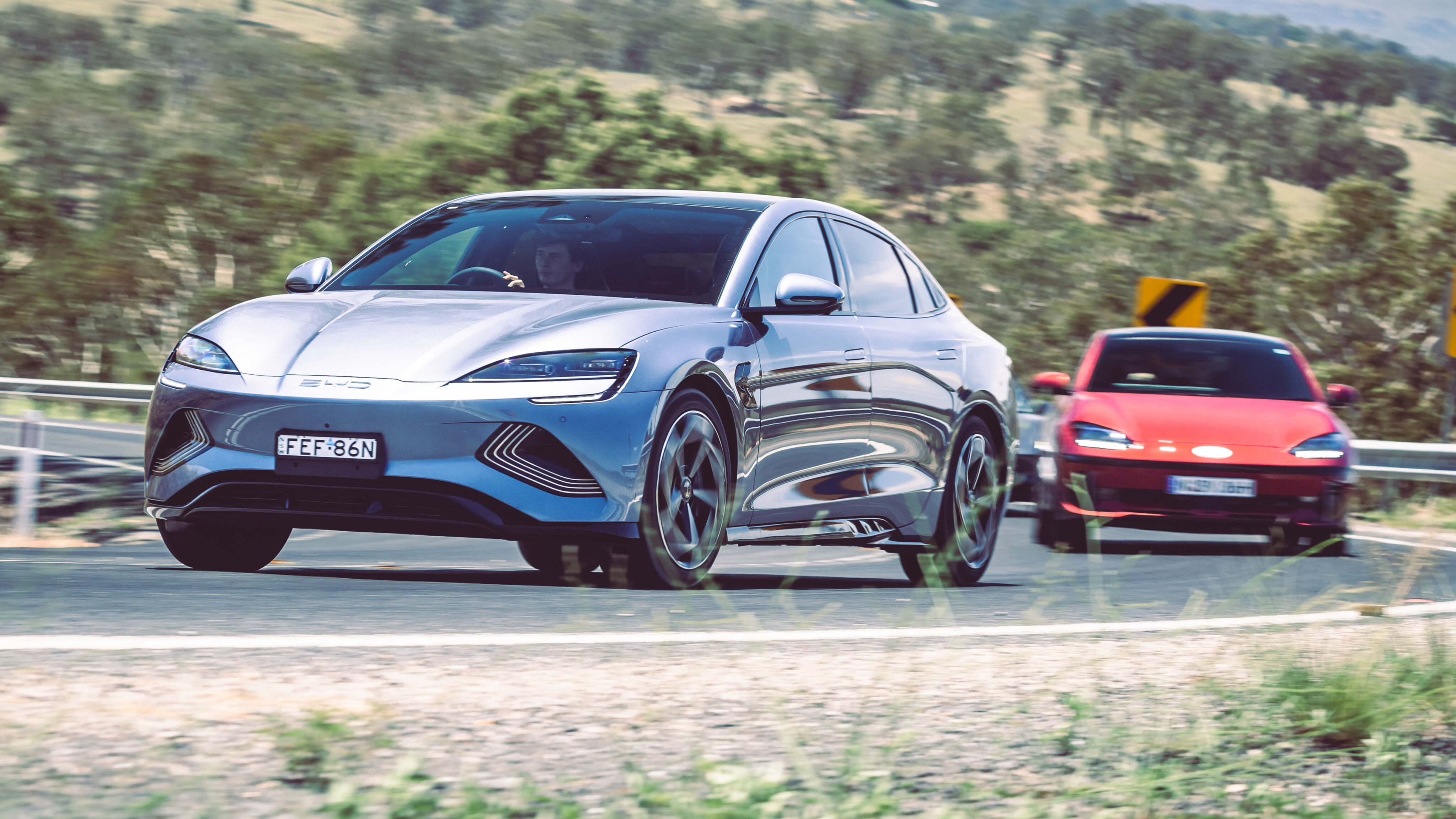
SCORING
BYD Seal score: 6.5/10
What we liked
- Dollar-to-kilowatt king
- Handsome exterior
- Interior packaging
Not so much...
- Chassis needs an overhaul
- Unpleasant brake pedal
- Hidden warranty snags
Hyundai Ioniq 6 score: 8.5/10
Things we like
- Best ride of the group
- Spacious and interesting cabin
- Real-world fast-charging speed
Not so much...
- Most expensive
- Lacks Tesla’s advanced connectivity
Tesla Model 3 score: 8.5/10
Things we like
- Still the leader of connected tech; ;
- much-improved interior comfort
- unbeatable efficiency
Not so much...
- Cabin feels sparse
- Ride is still not resolved
- Silly indicators
Specifications
| BYD Seal Performance | Hyundai Ioniq 6 Techniq AWD | Tesla Model 3 RWD | |
|---|---|---|---|
| Price (before on-road costs) | $68,798 | $83,500 | $61,900 ($67,590 as tested) |
| Drive | AWD Twin motor | AWD Twin motor | RWD single motor |
| Power | 390kW | 239kW | 208kW* |
| Torque | 670Nm | 605Nm | 420Nm* |
| 0-100km/h | 3.8 seconds | 5.1 seconds | 6.1 seconds |
| Range (WLTP) | 520km | 545km | 513km |
| Battery size | 82.5kWh | 77.4kWh | 57.5kWh (LFP) |
| Peak charge DC / 10-80% | 150kW / 37m | 250kW / 18m | 170kW / 25 min |
| Peak charge AC / 0-100% | 7kW / 11h 47m | 11kW / 7h 10m | 11kW / 6h 30m |
| W/L/H | 4800/1875/1460mm | 4855/1880/1495mm | 4720/1933/1441mm |
| WB | 2920mm | 2950mm | 2875mm |
| Weight | 2185kg | 2078kg | 1836kg |
| Boot (under-bonnet storage) | 400L (50L) | 401L (14.5L) | 561L (88L) |
| ANCAP | 5 star (2023) | 5 star (2022) | 5 star (2019) |
| *figures are estimates provided by EV database |

COMMENTS